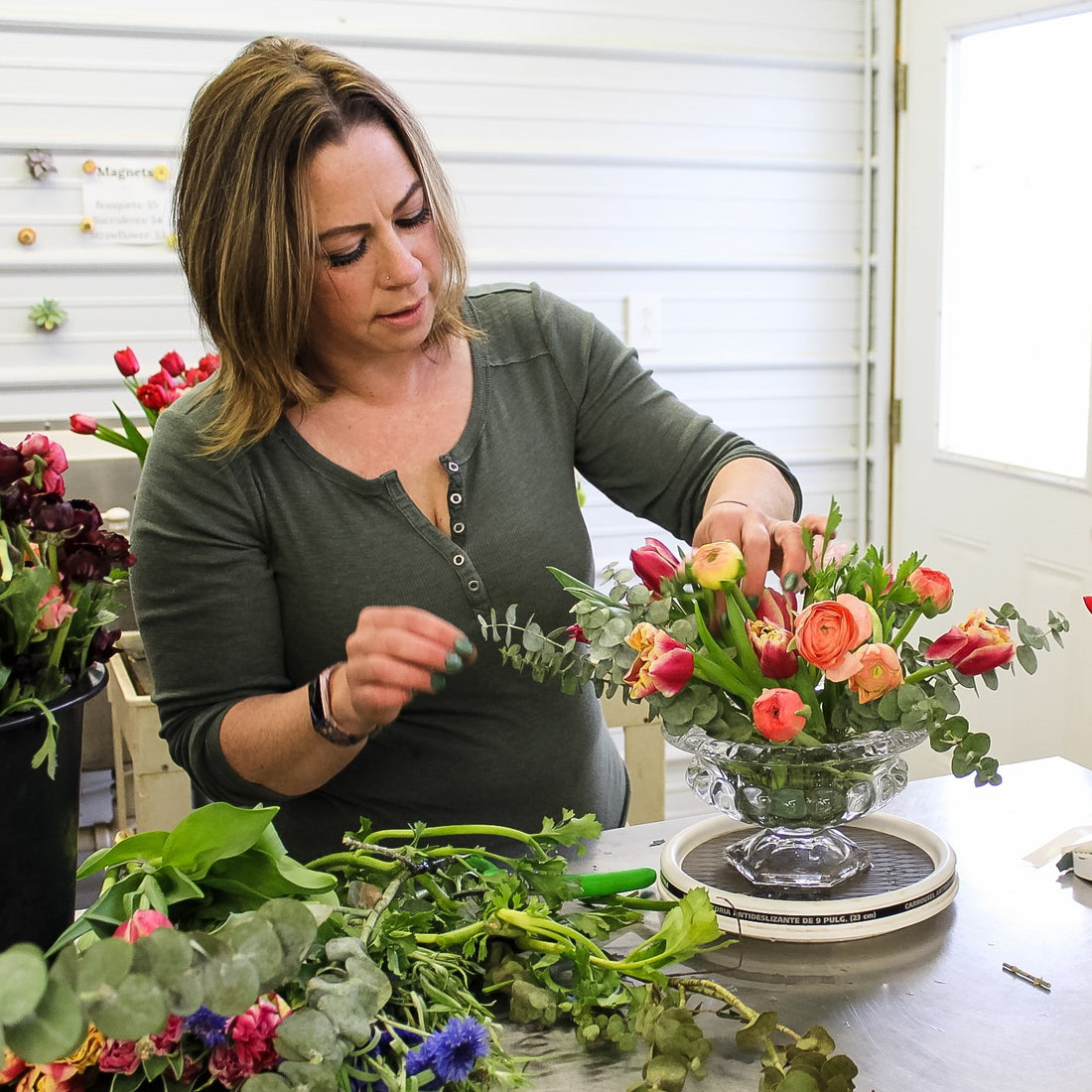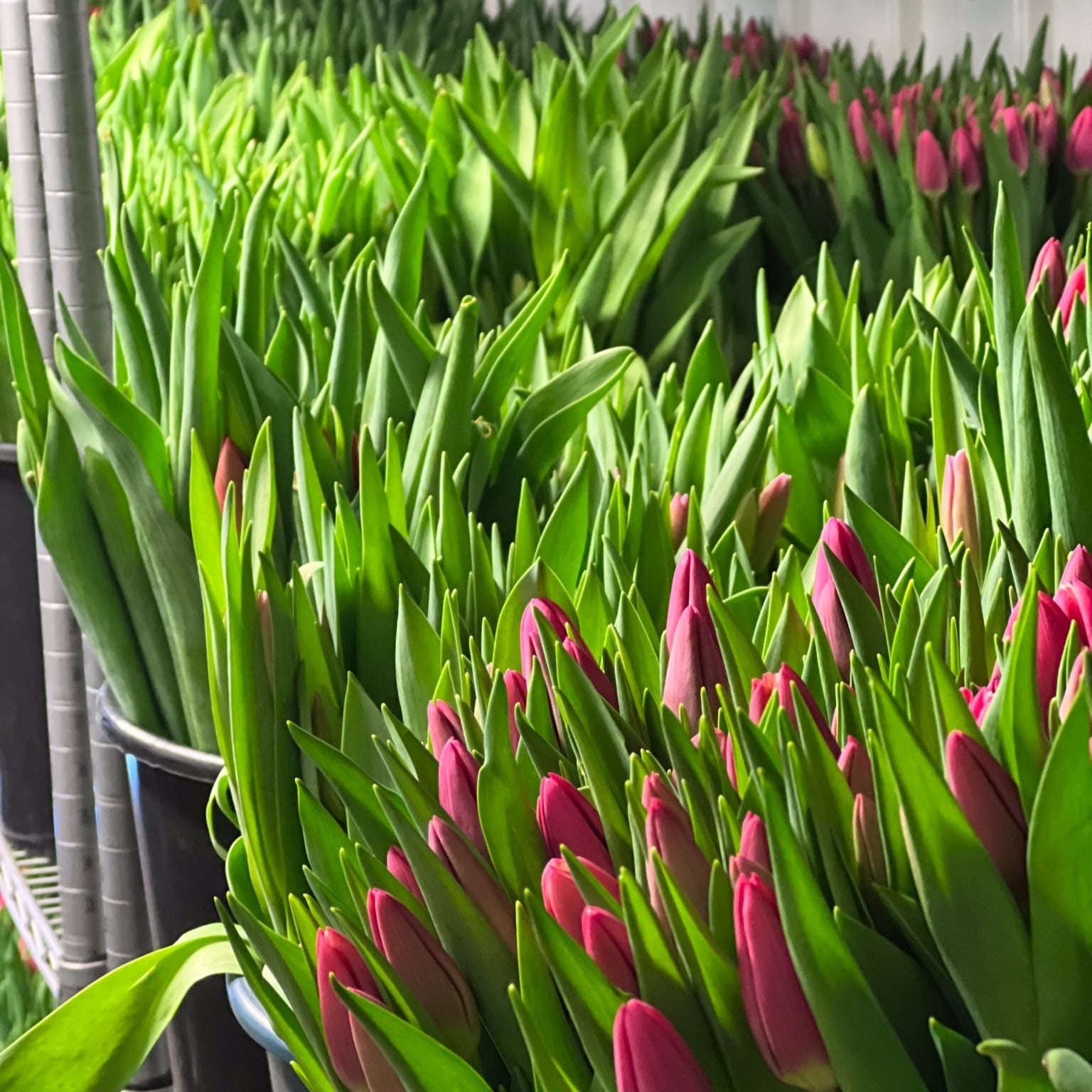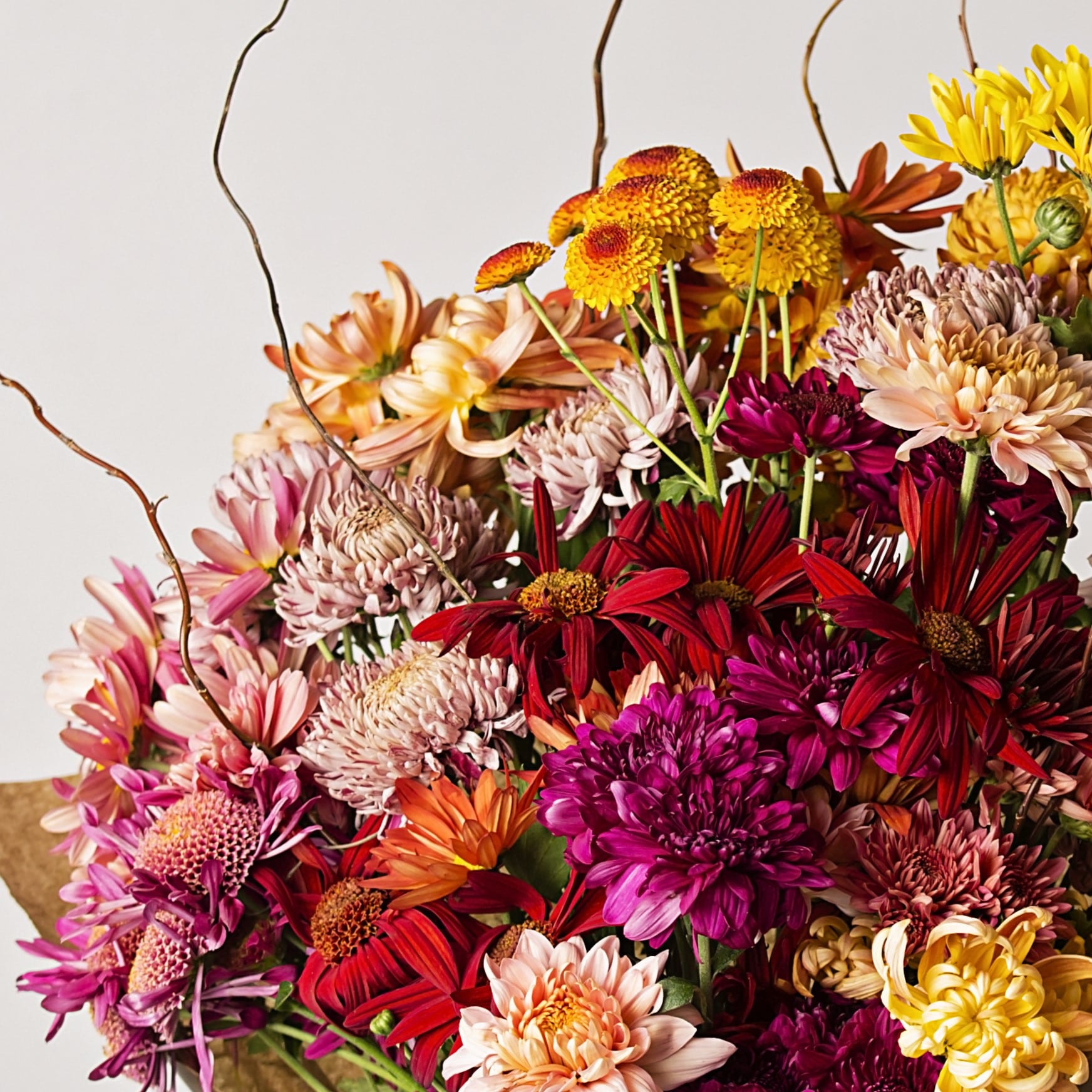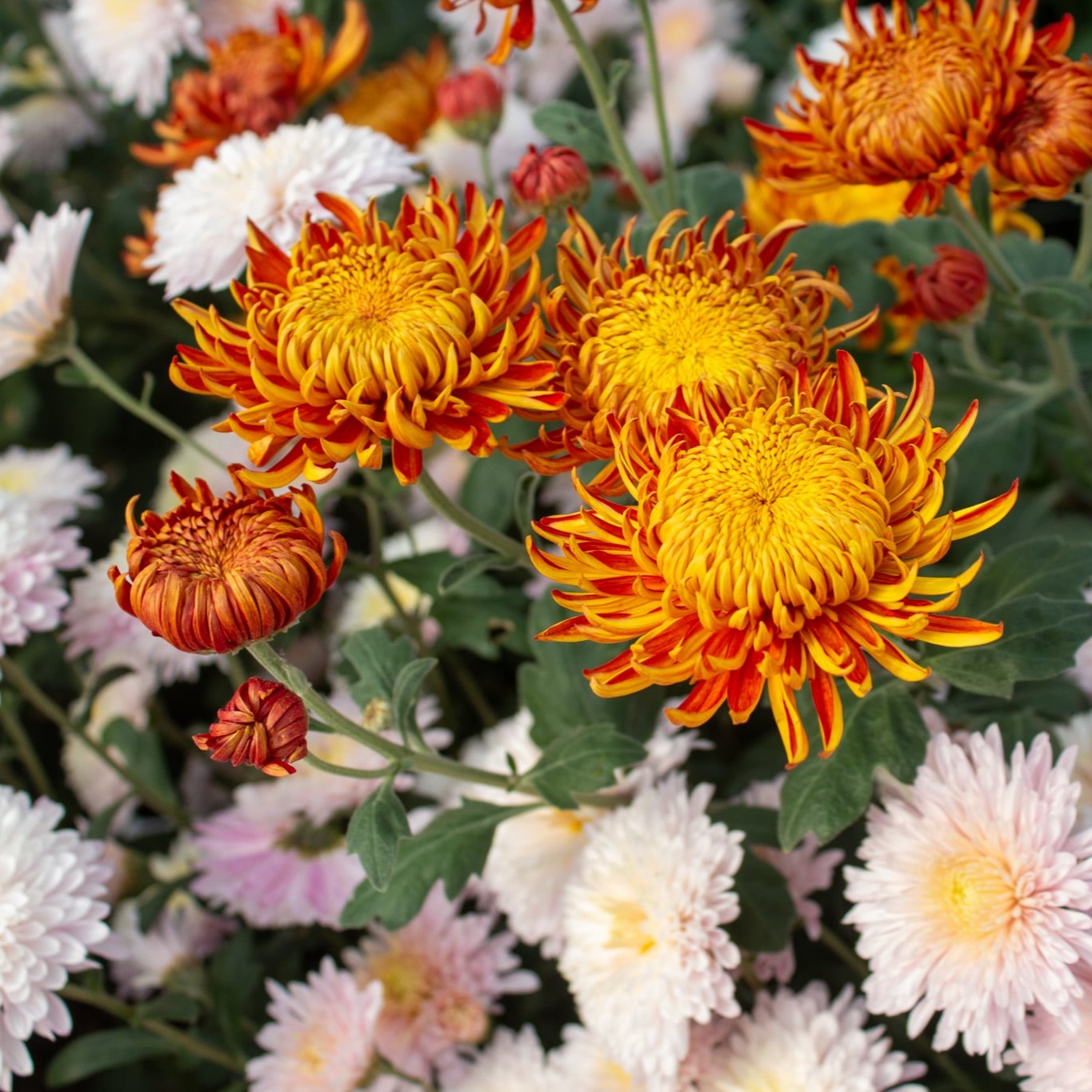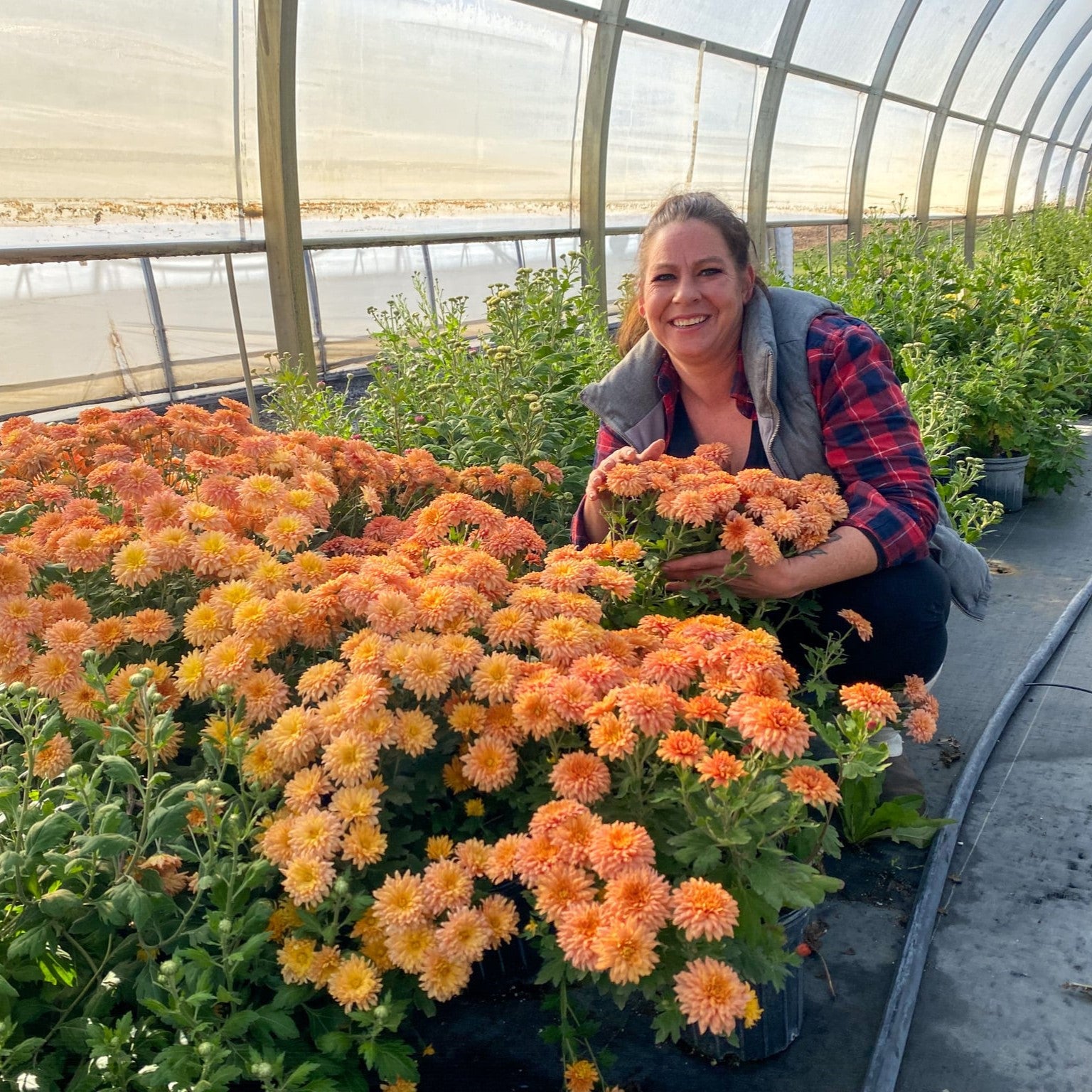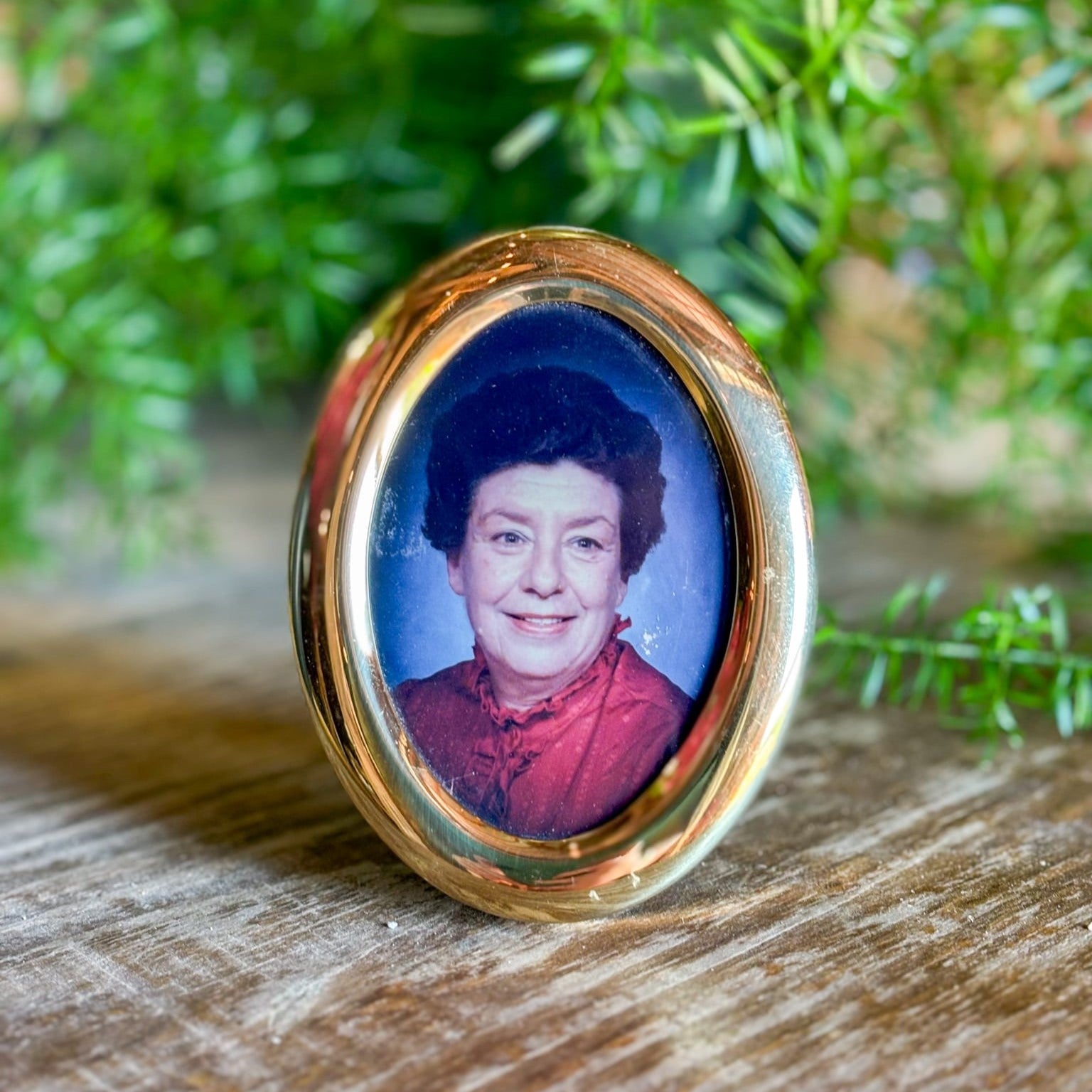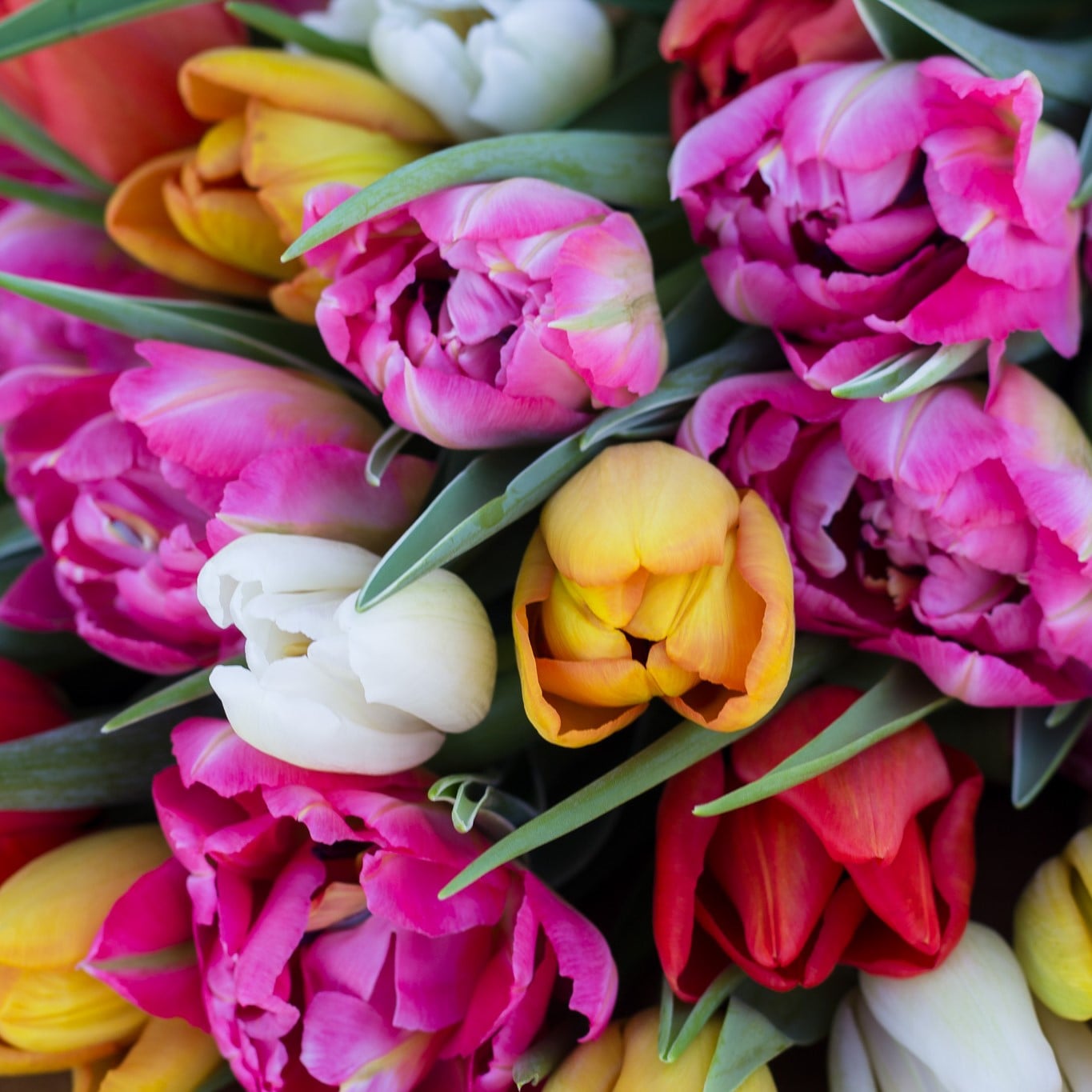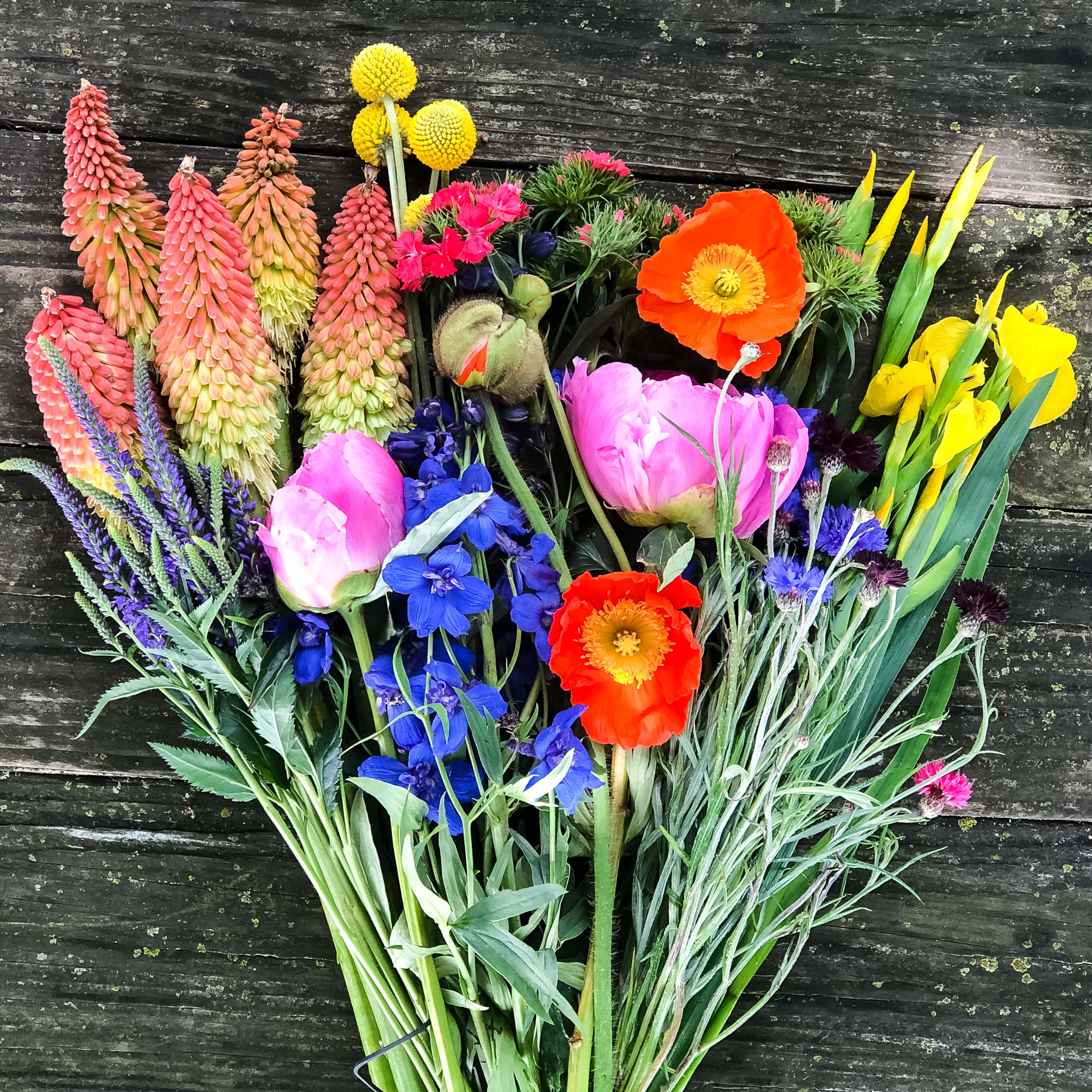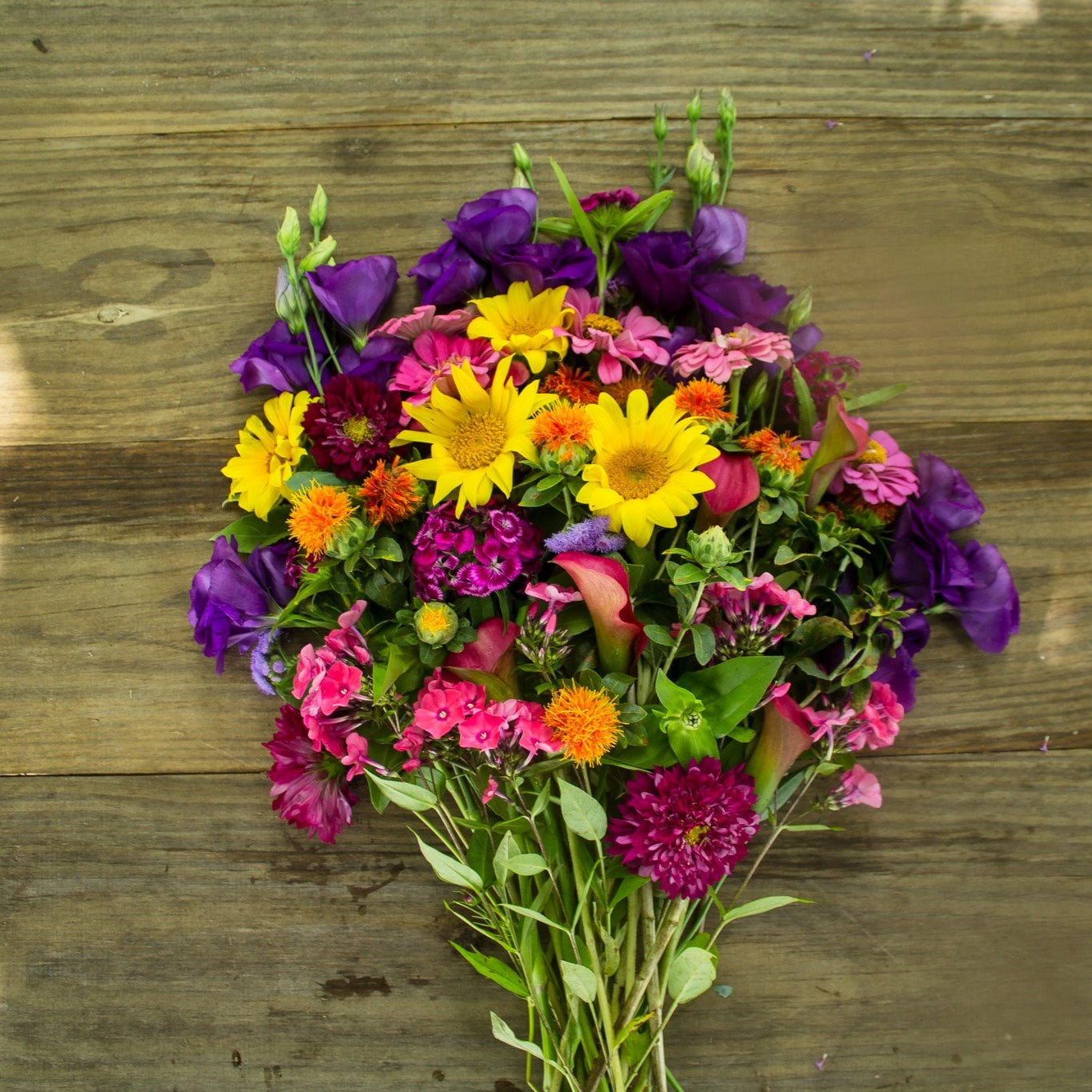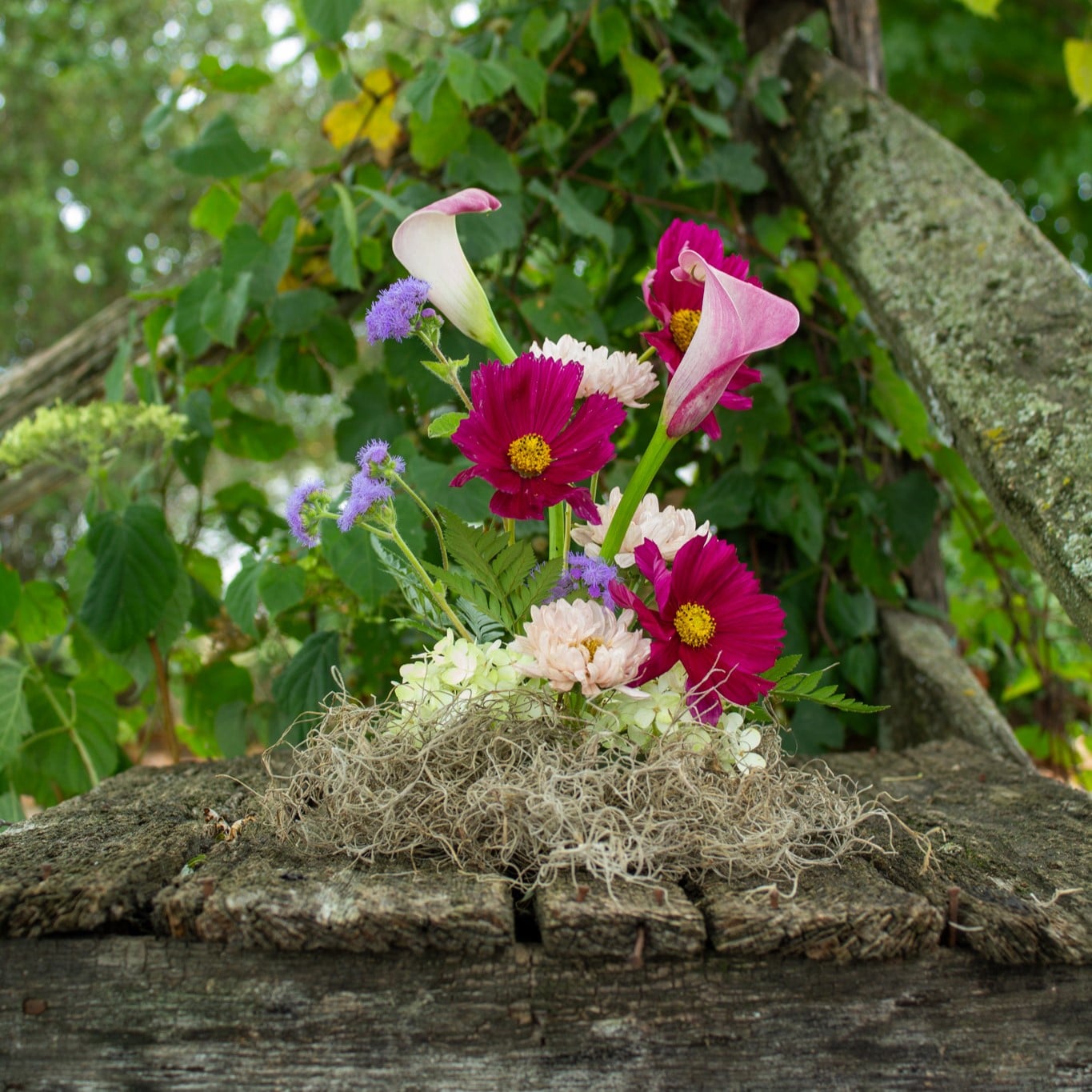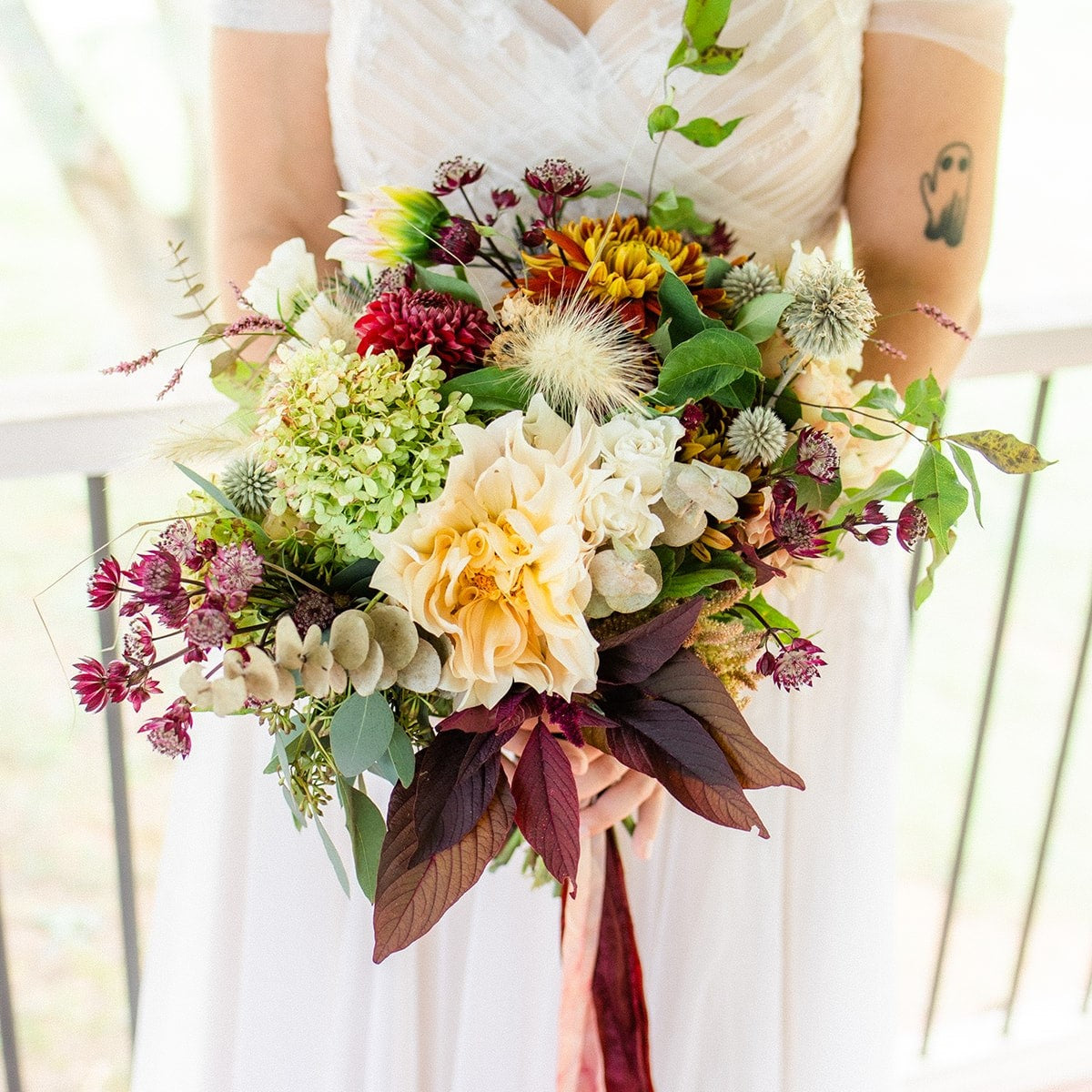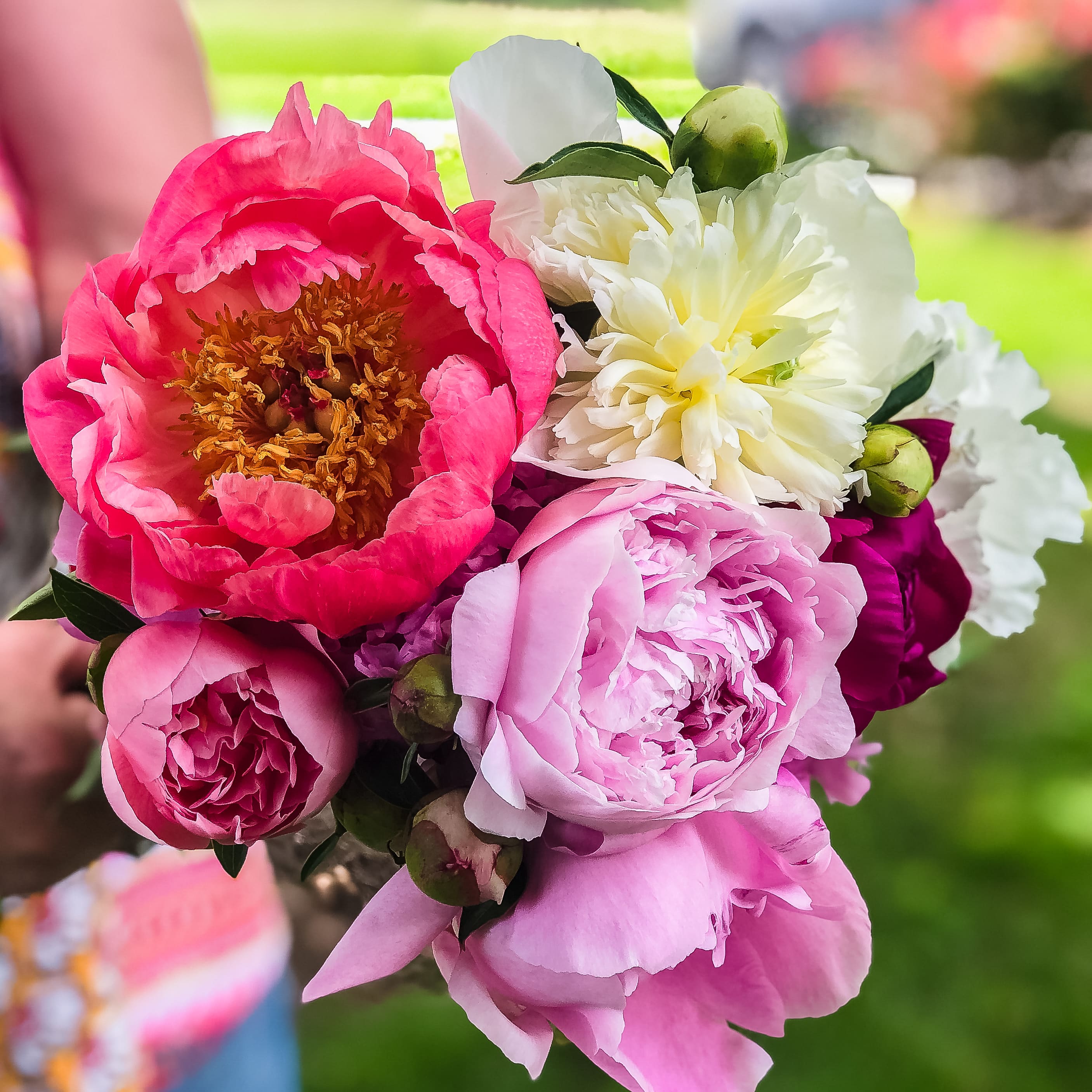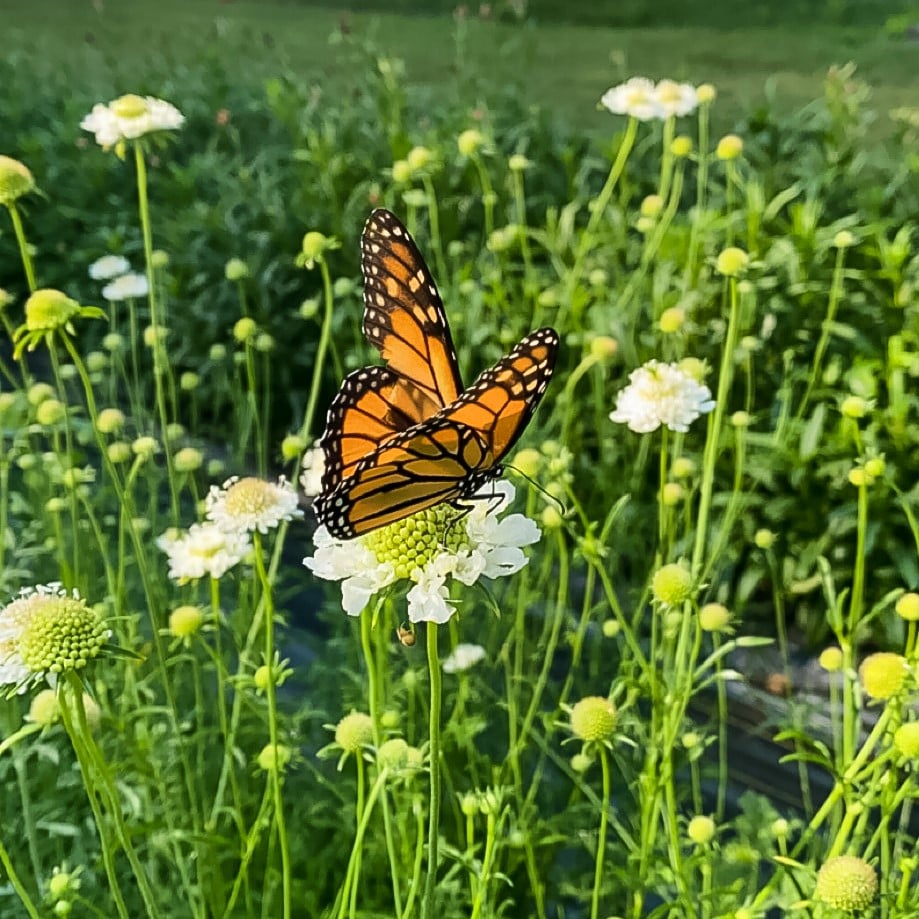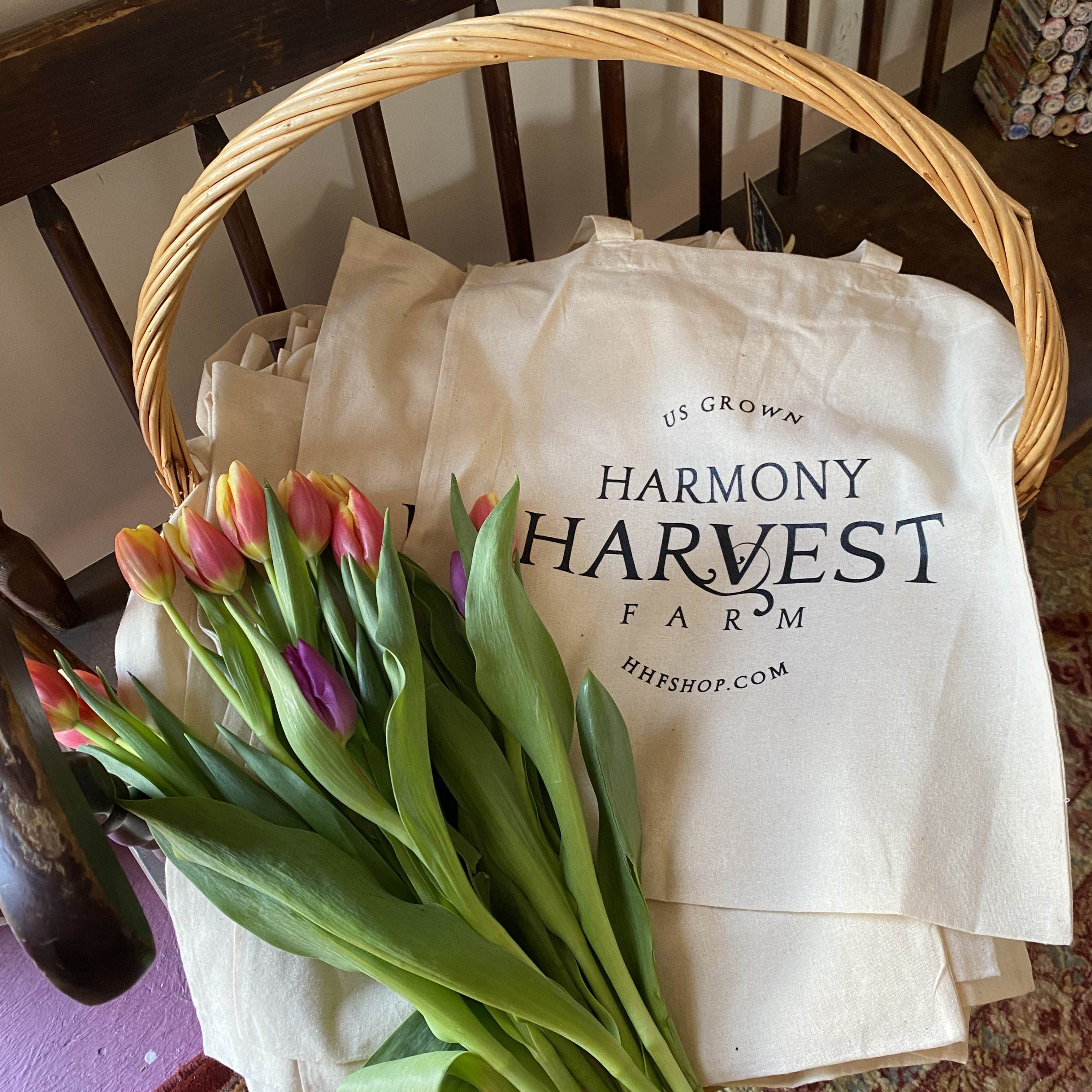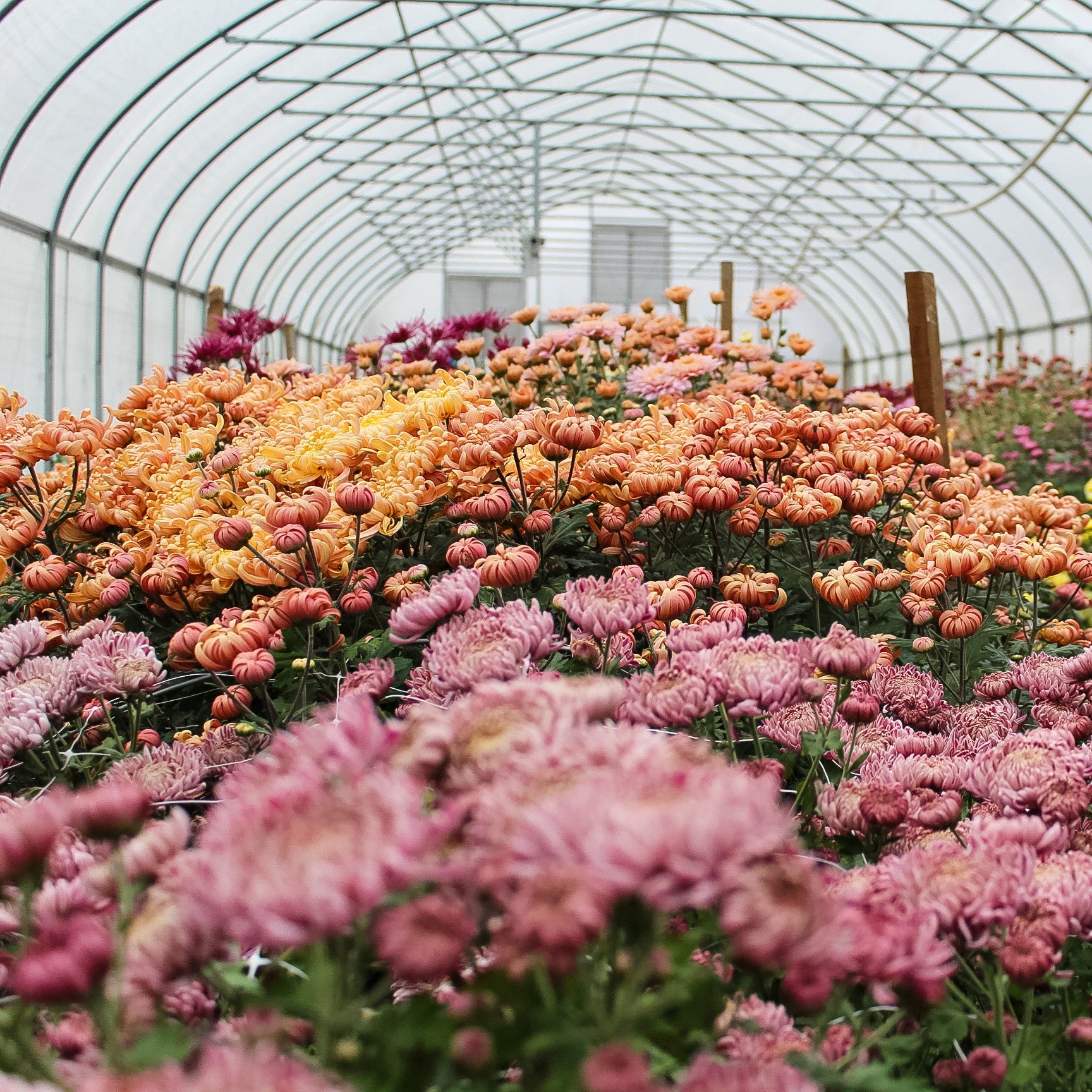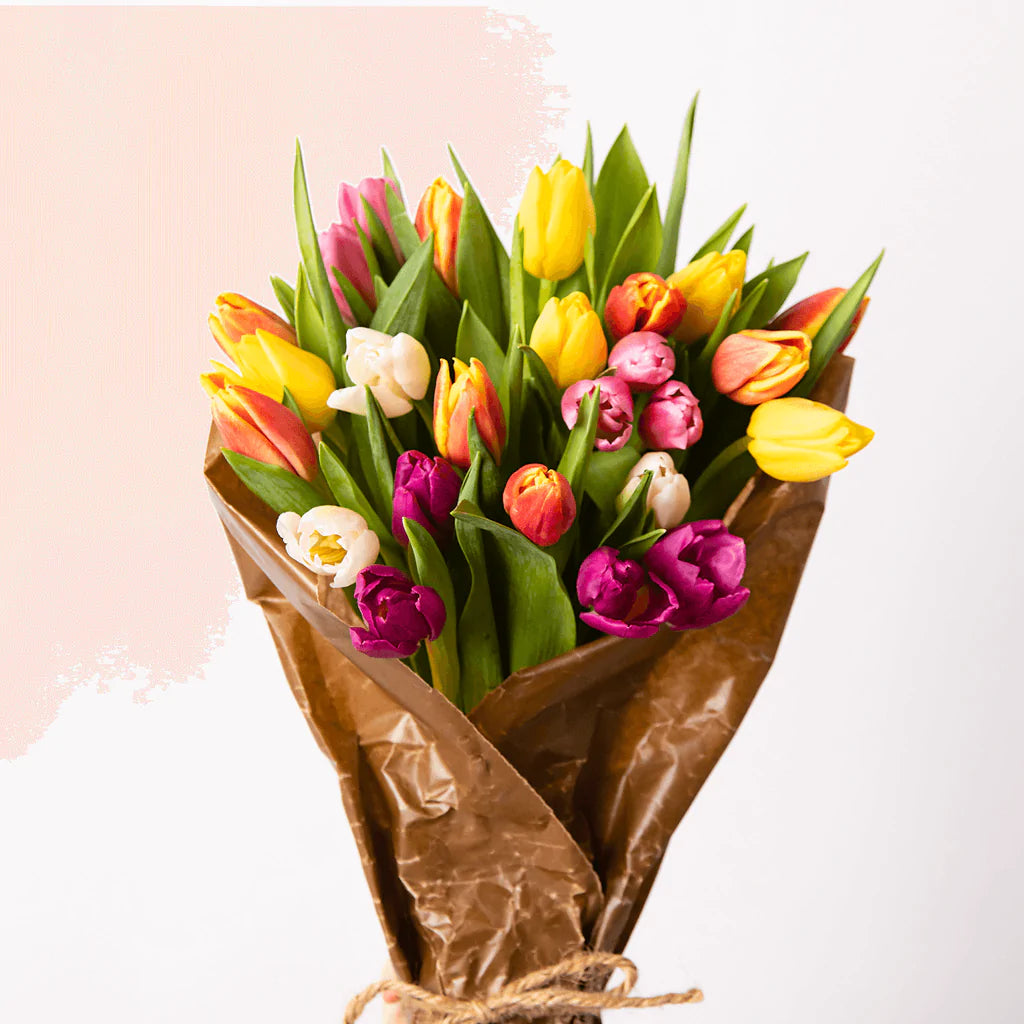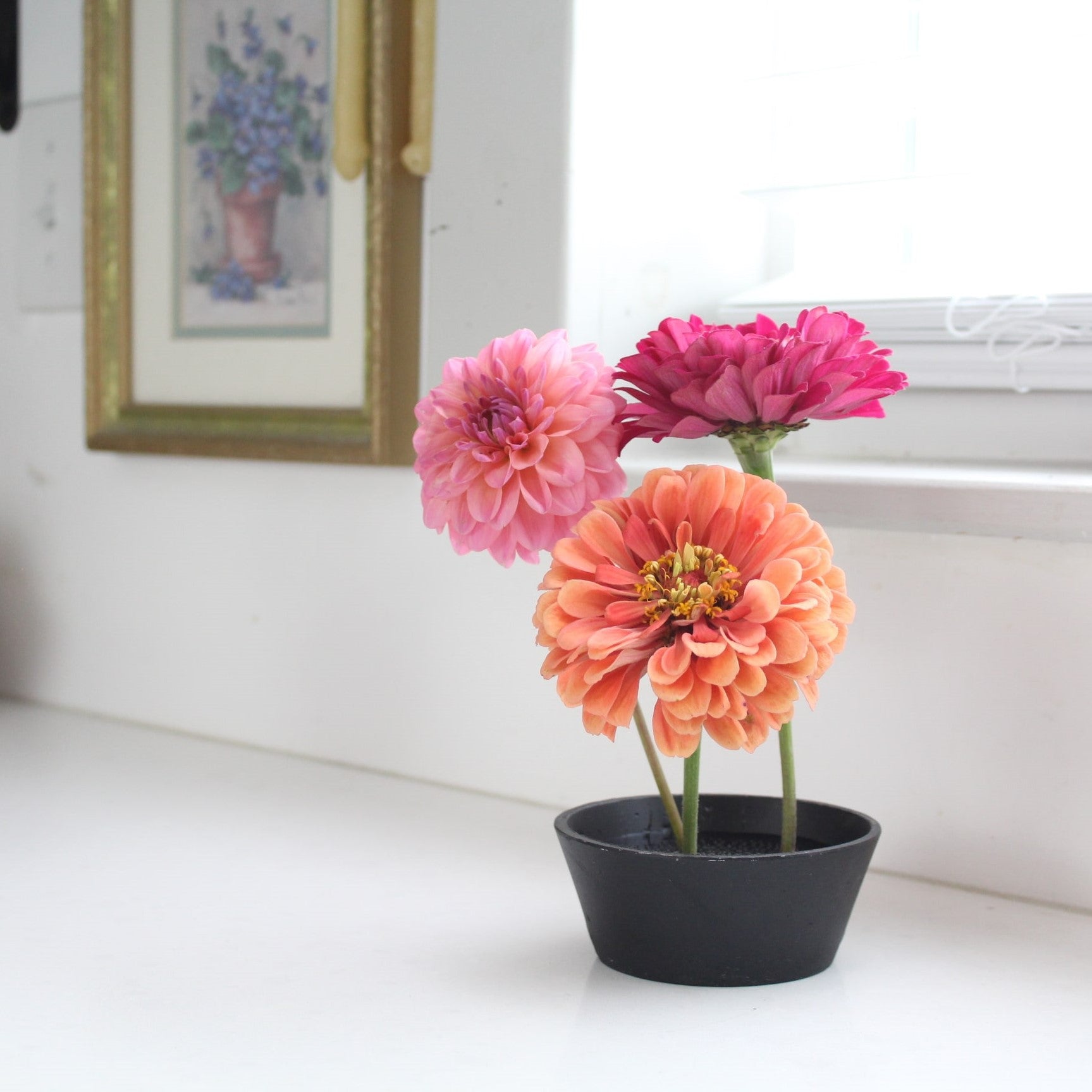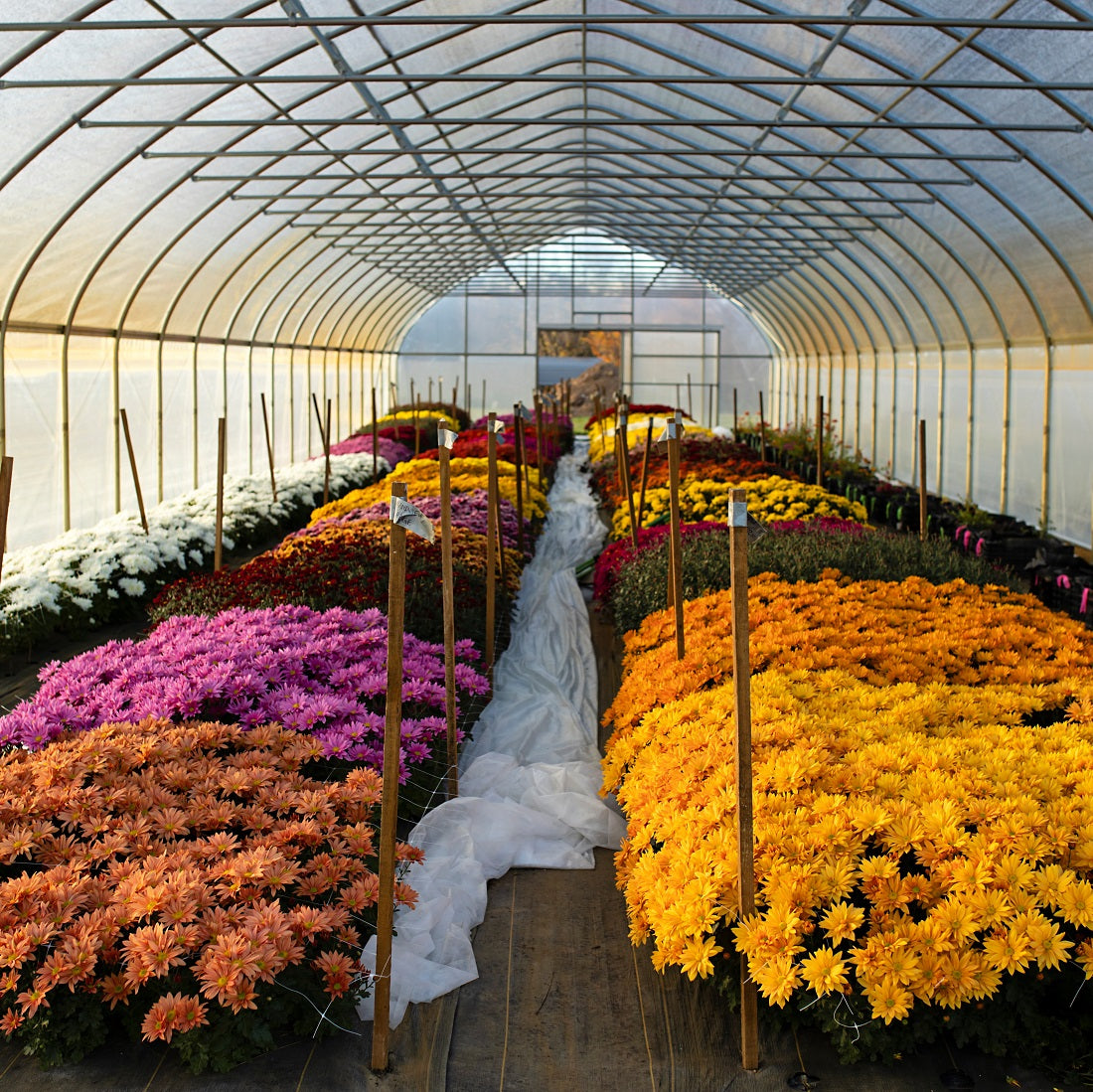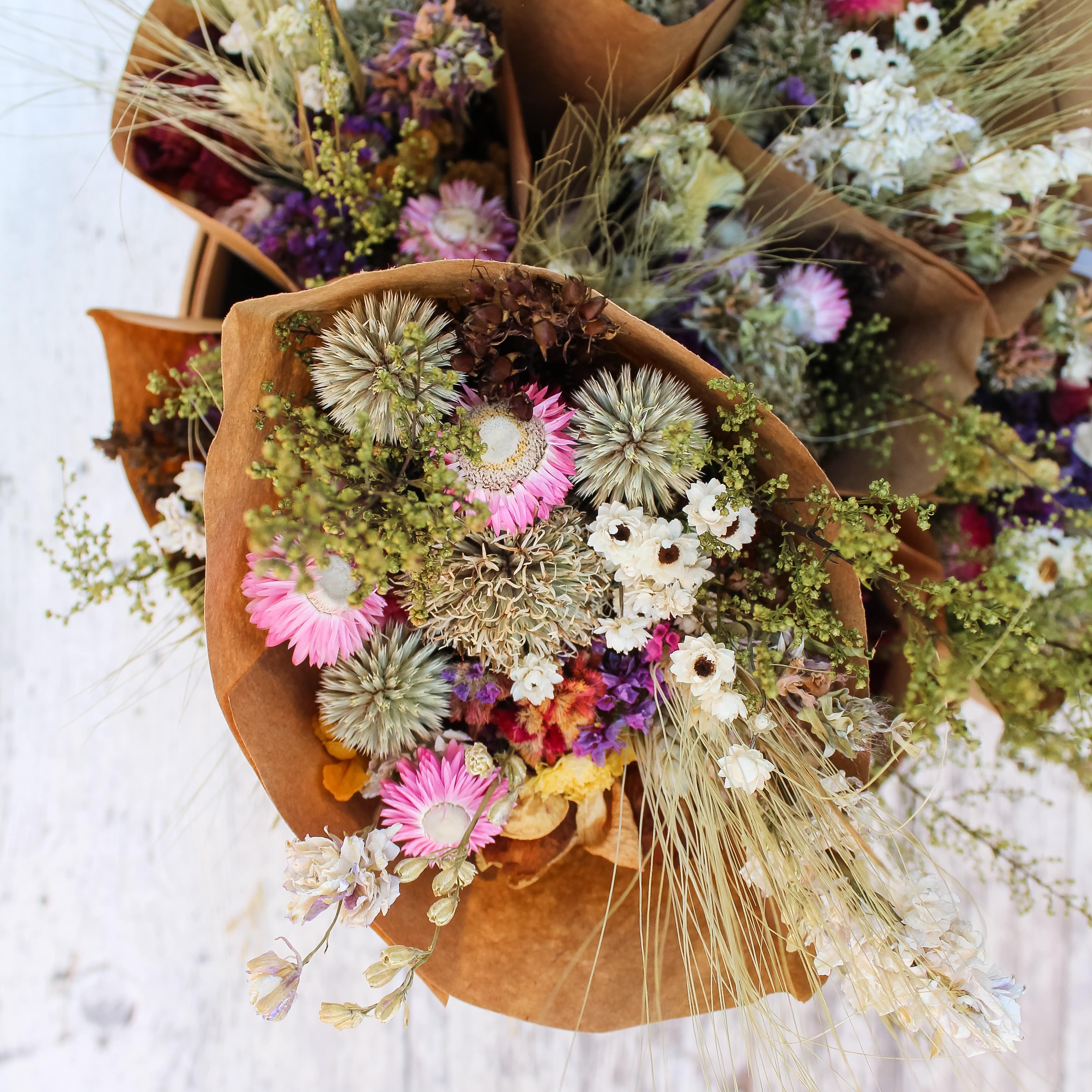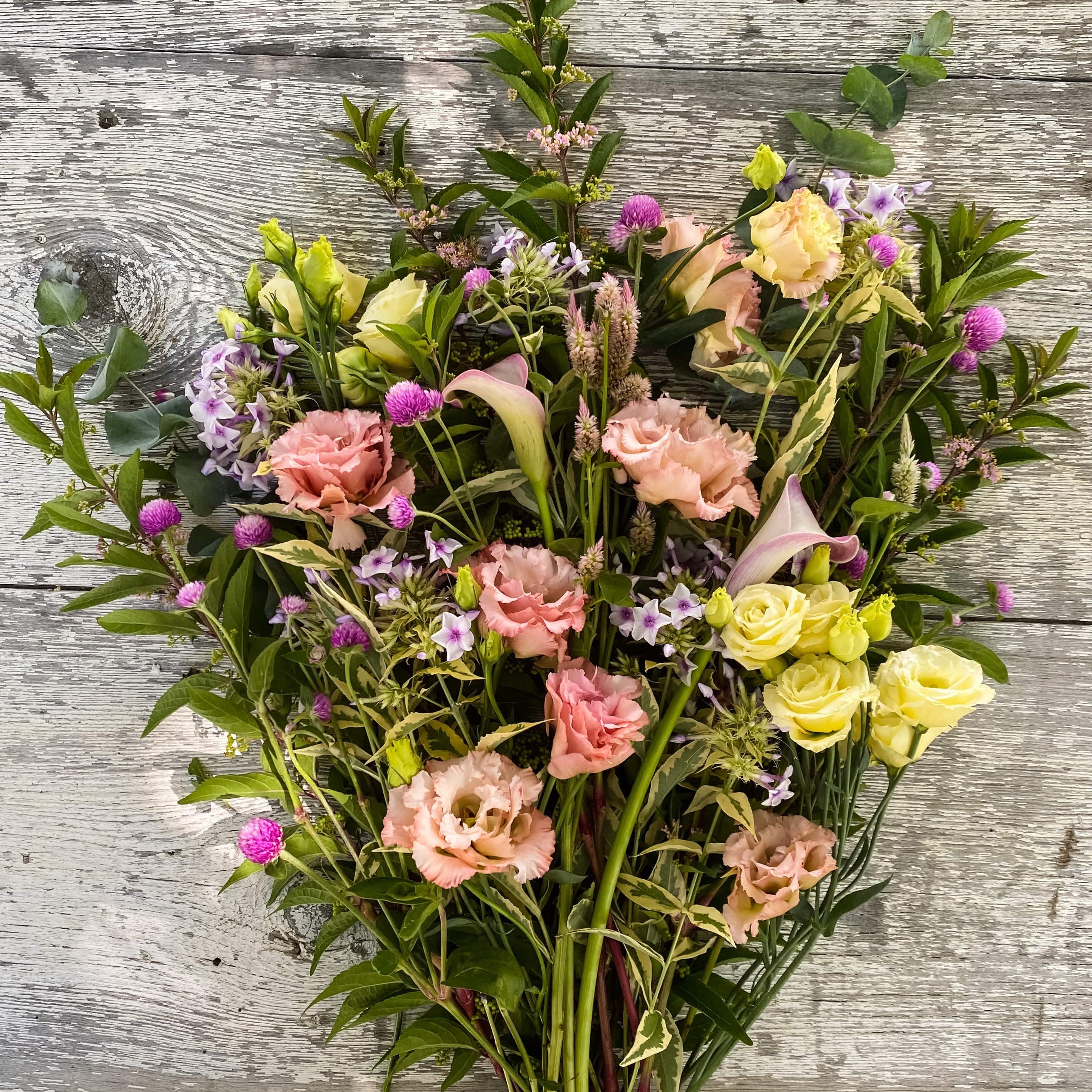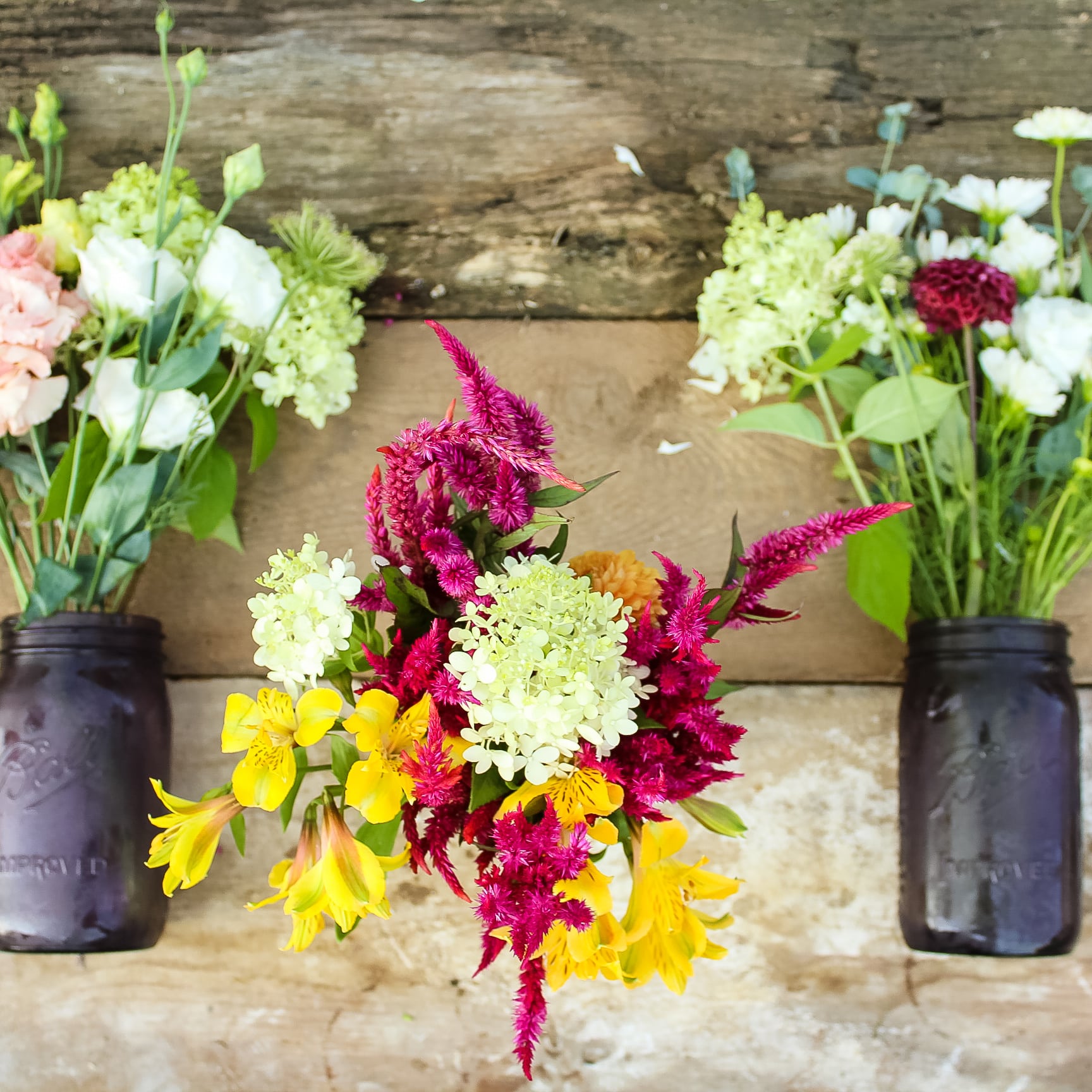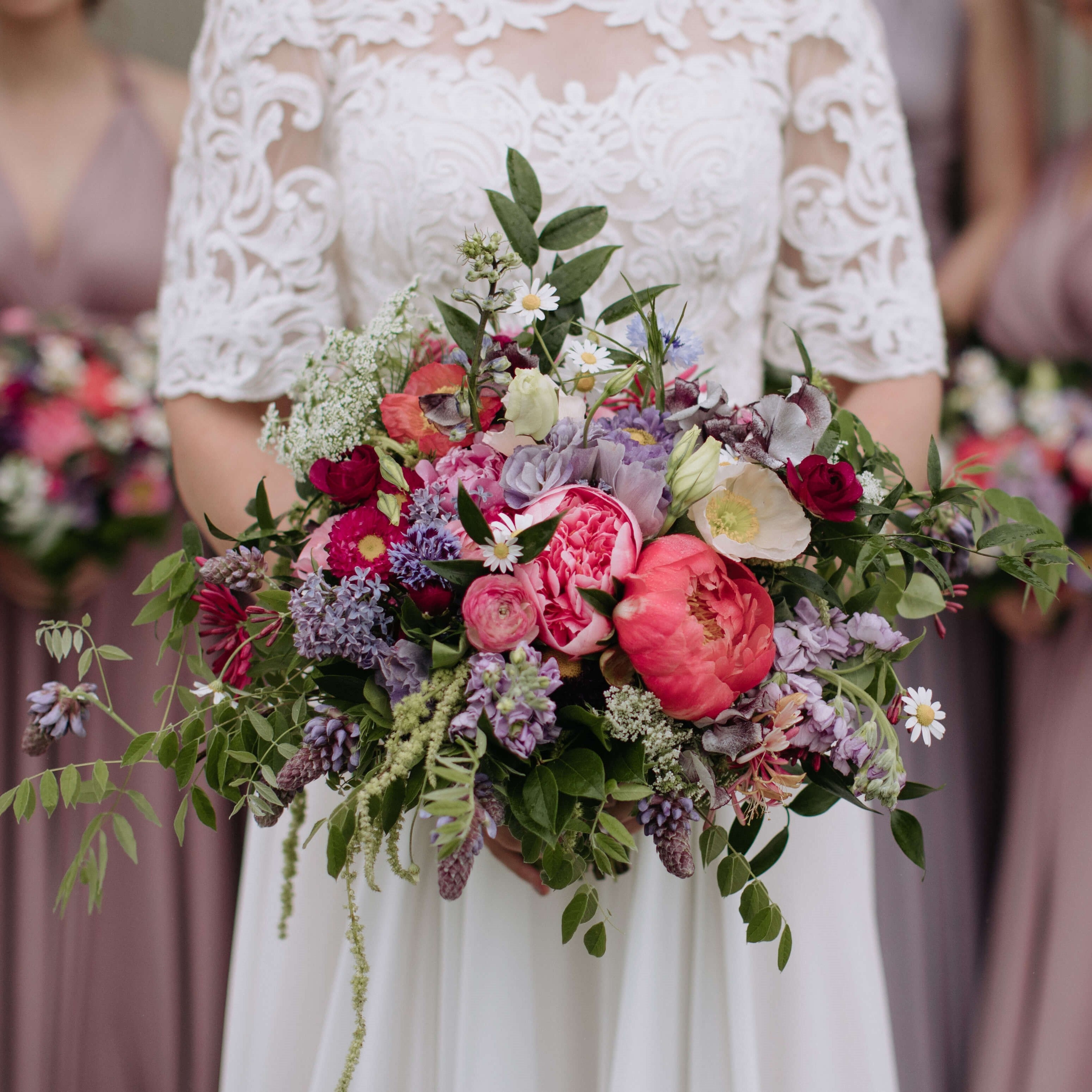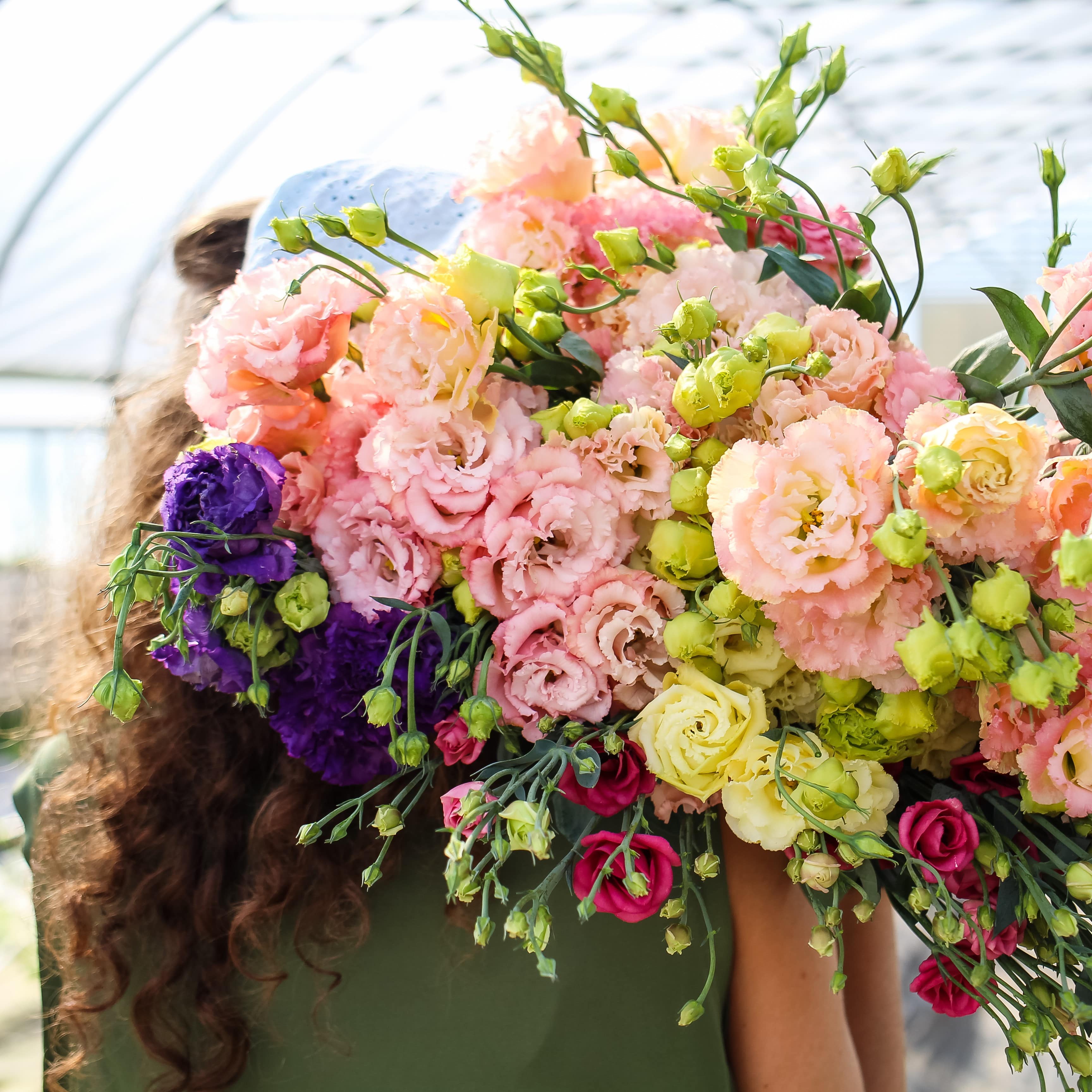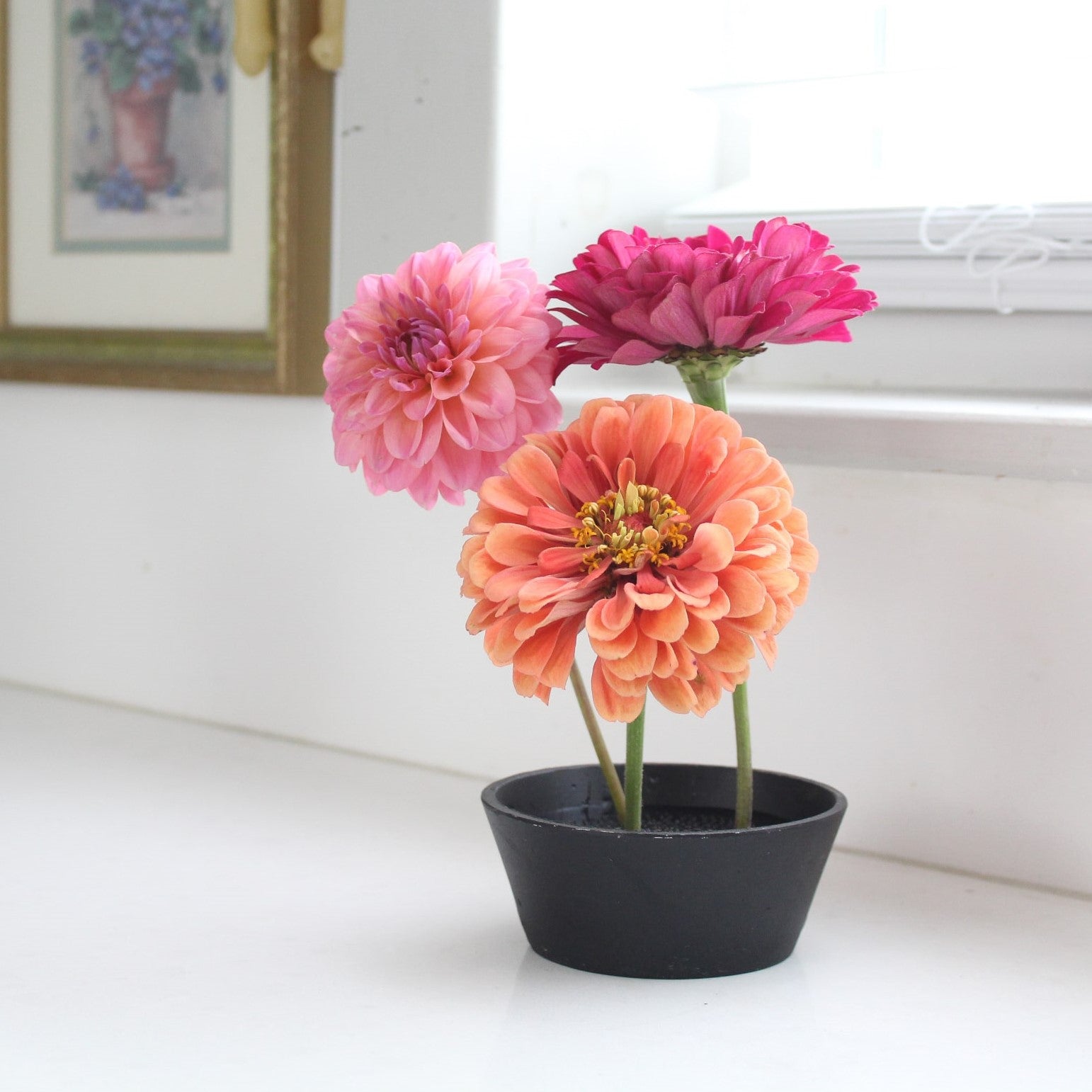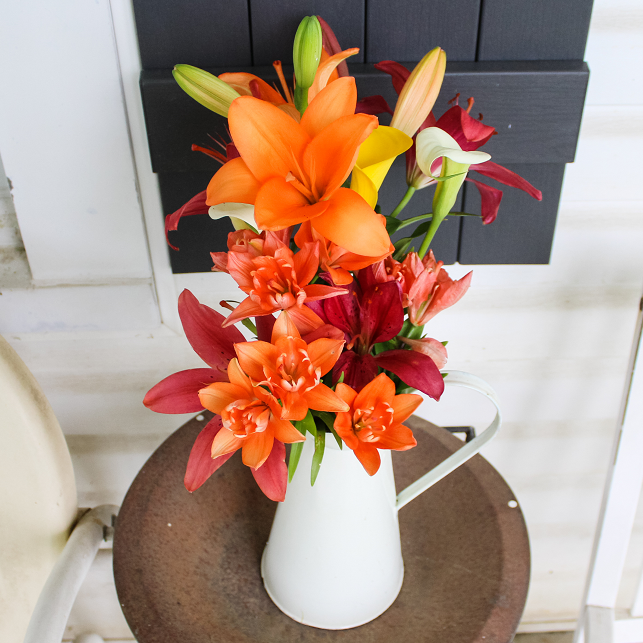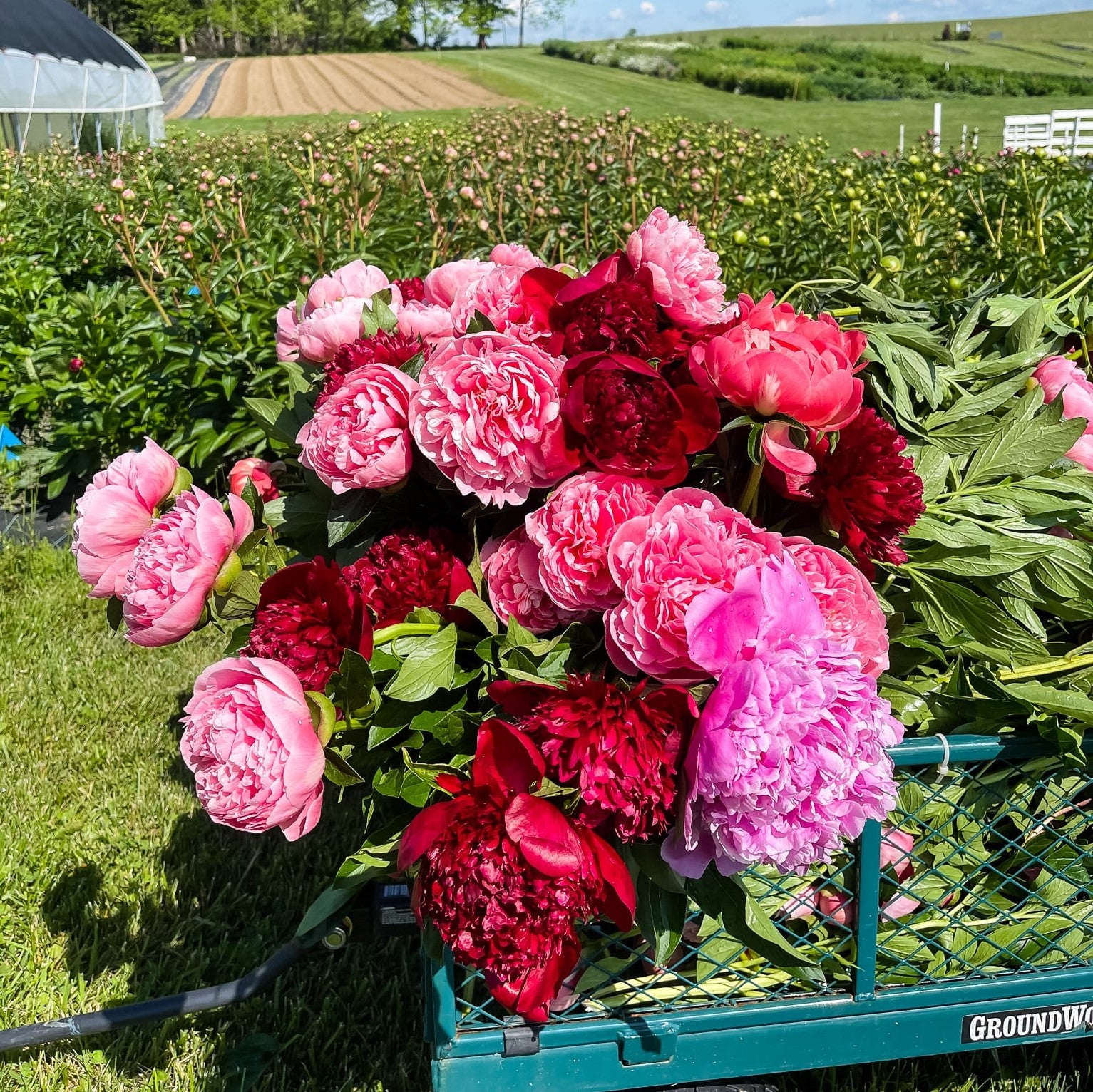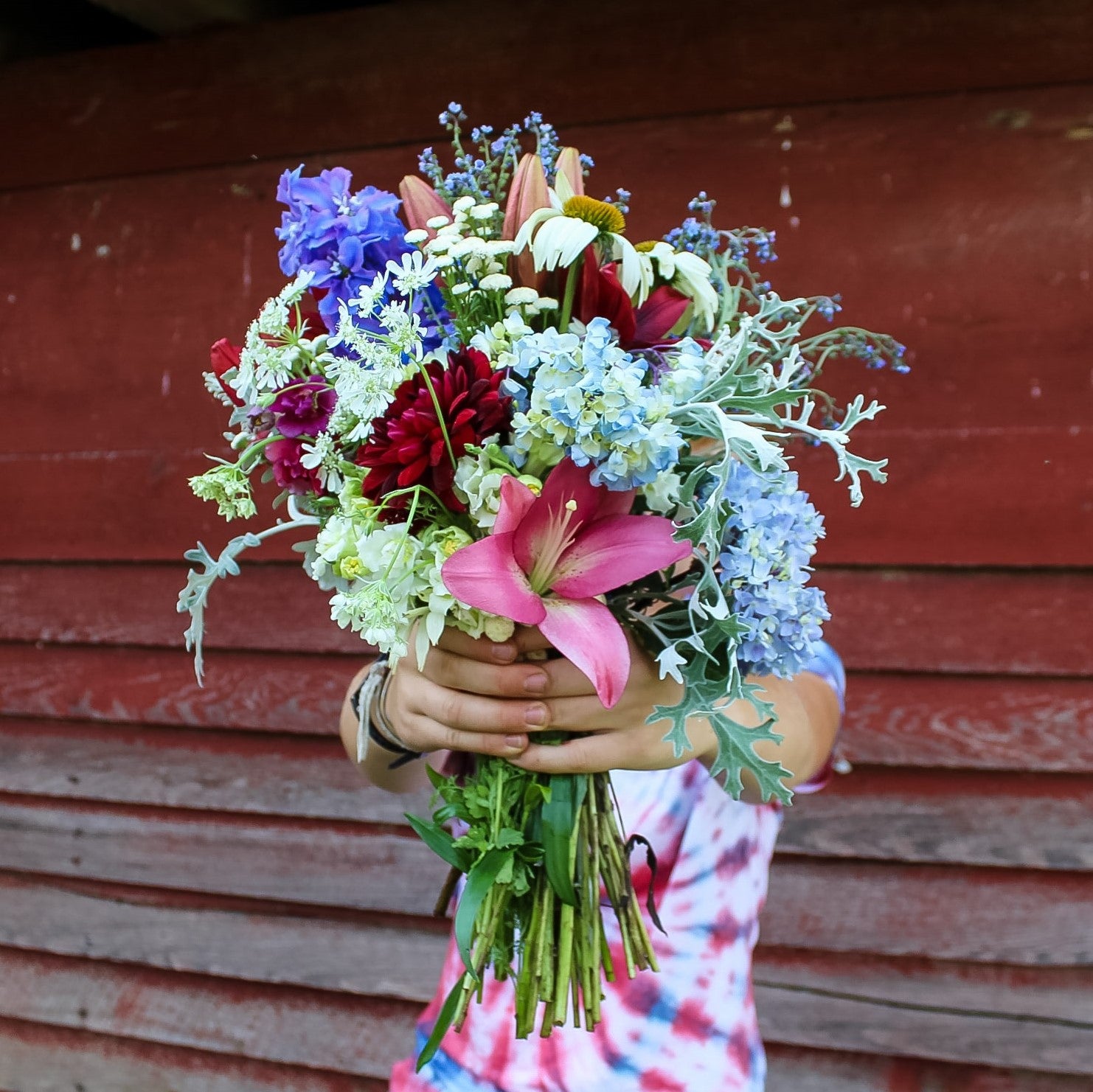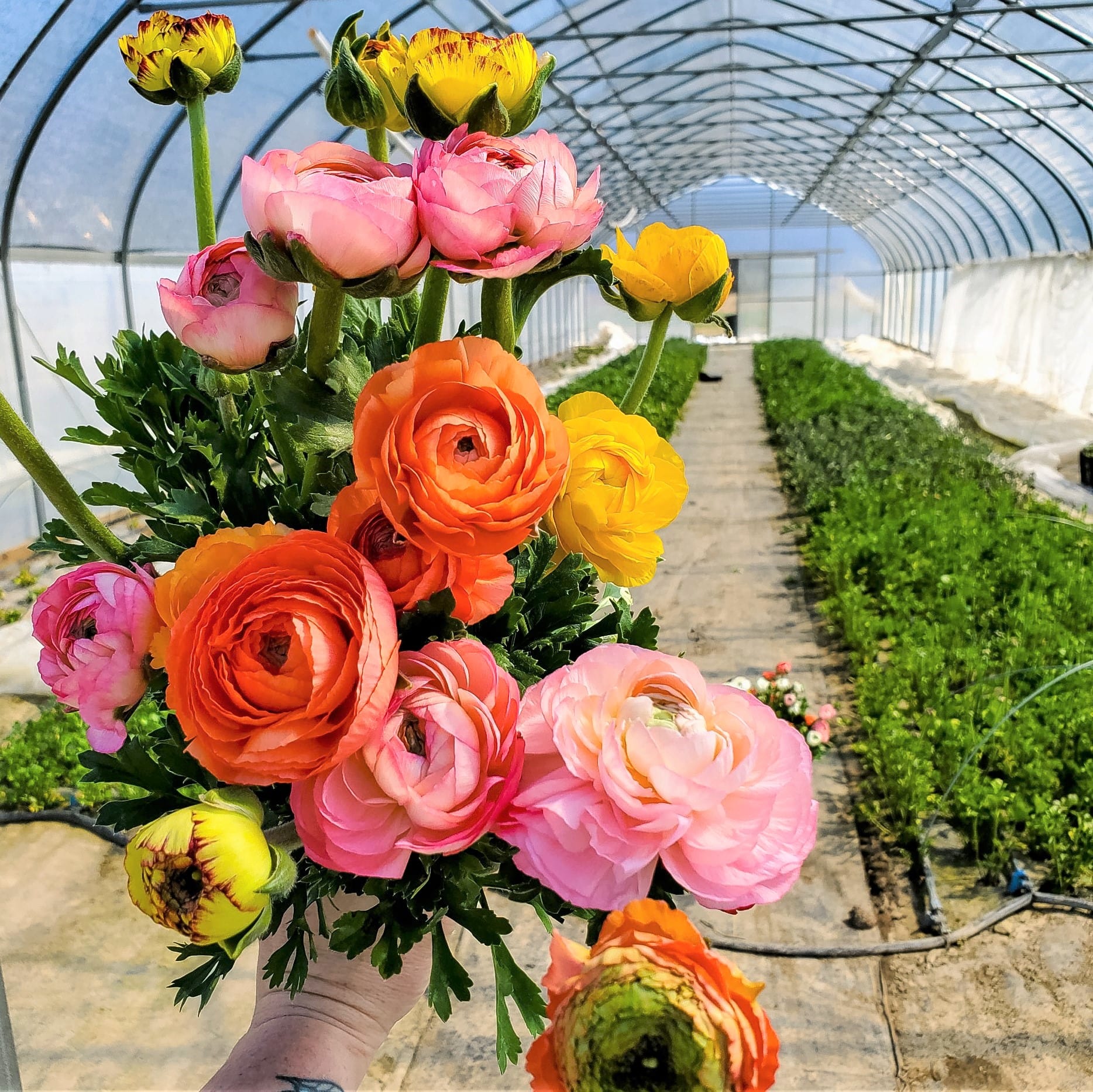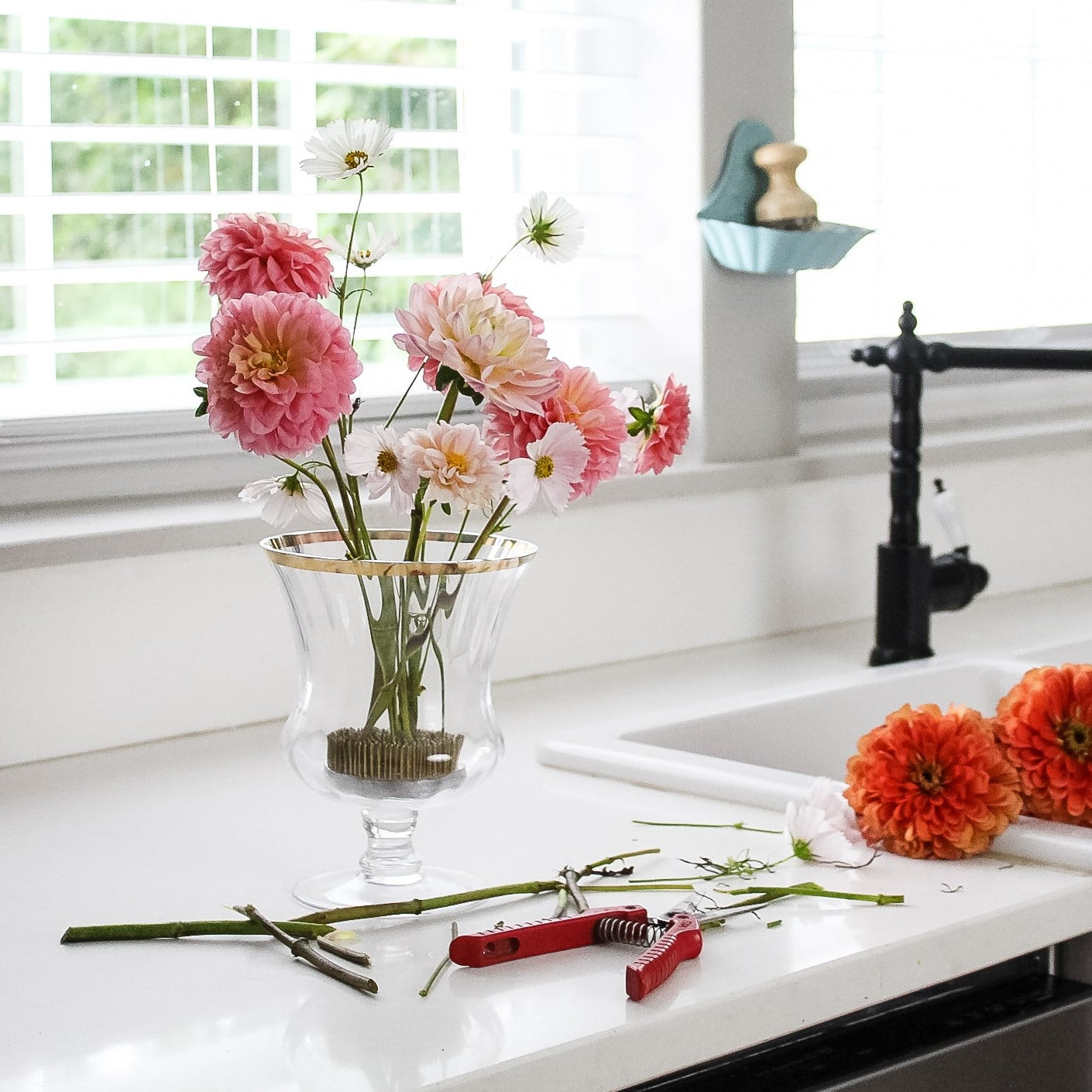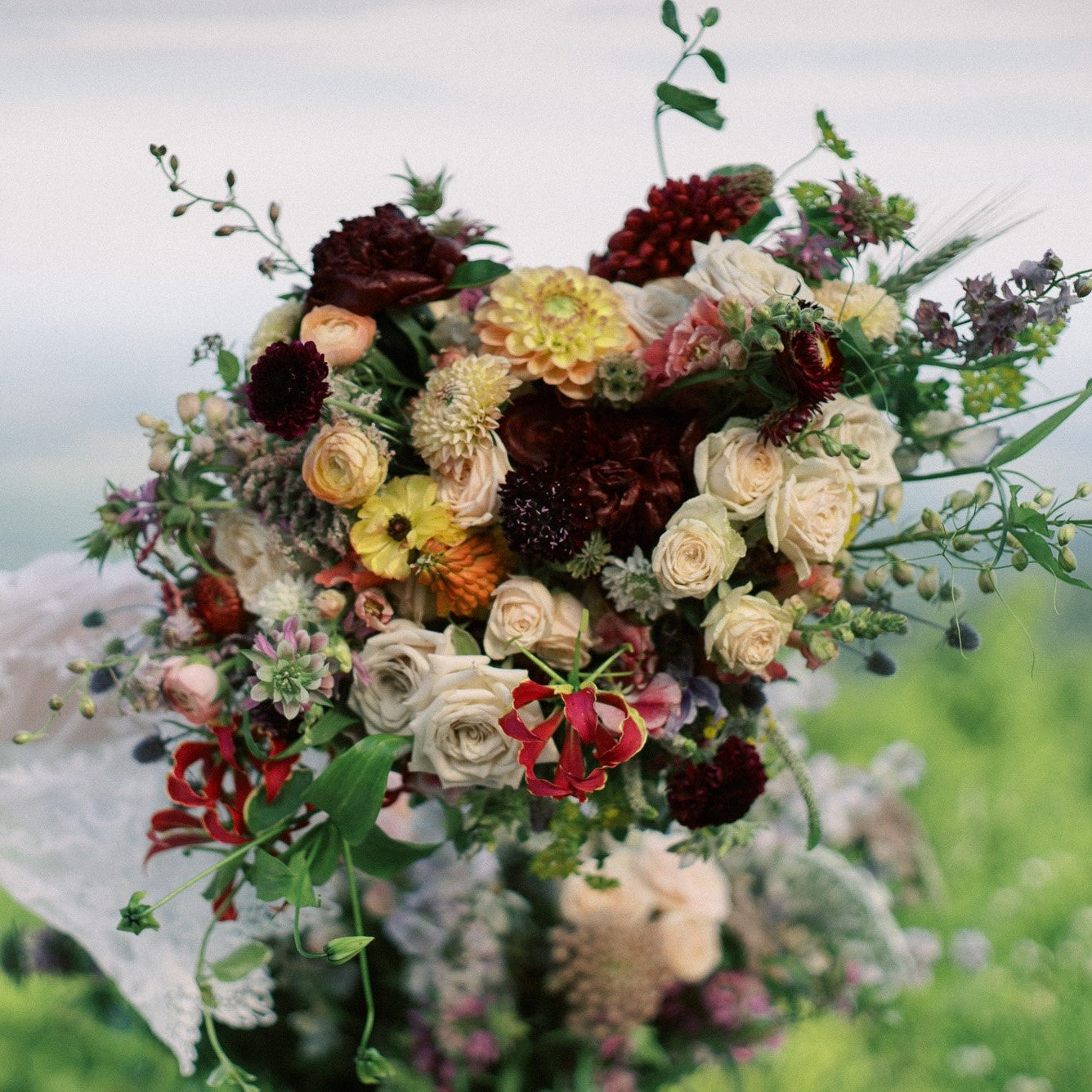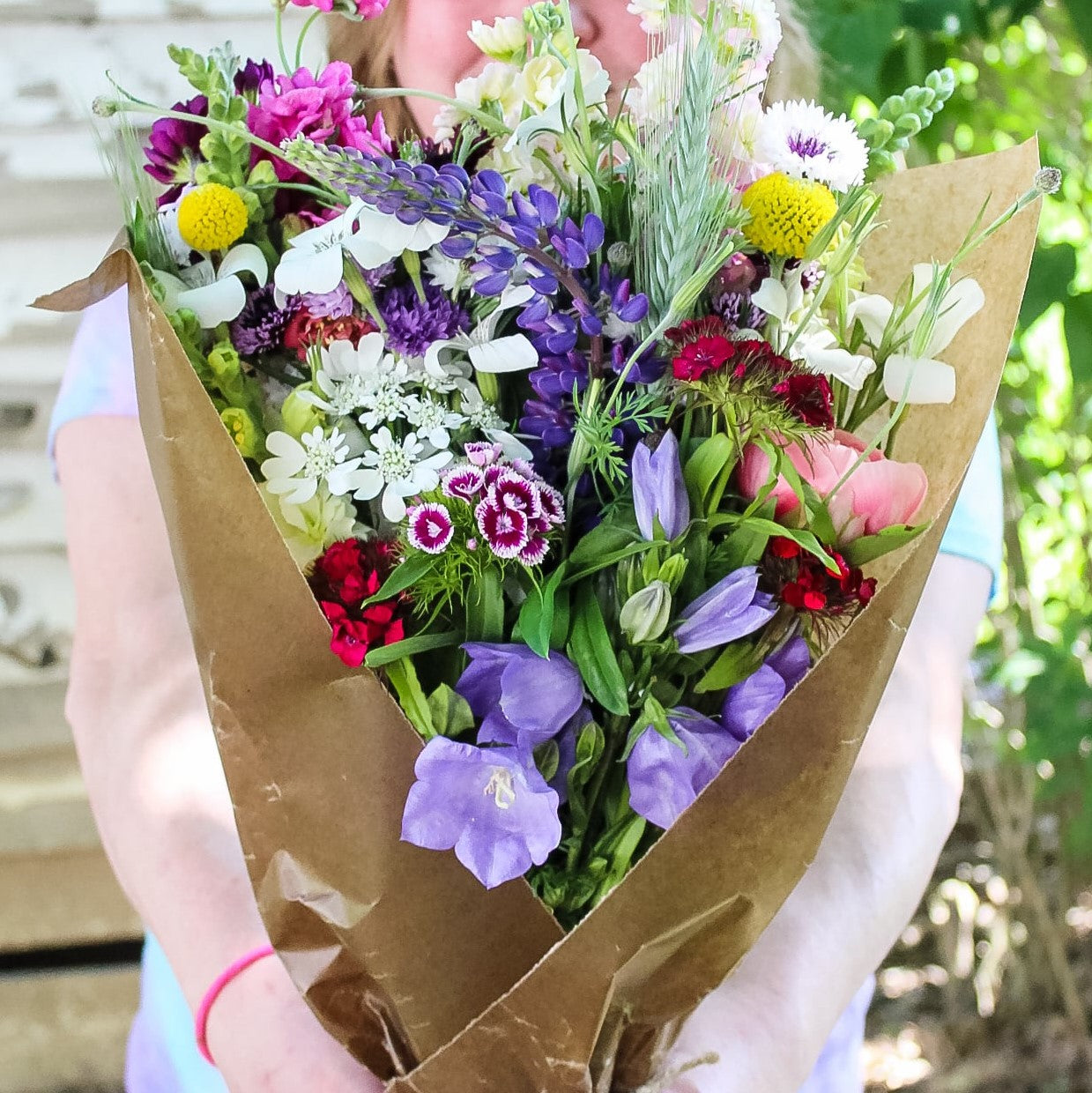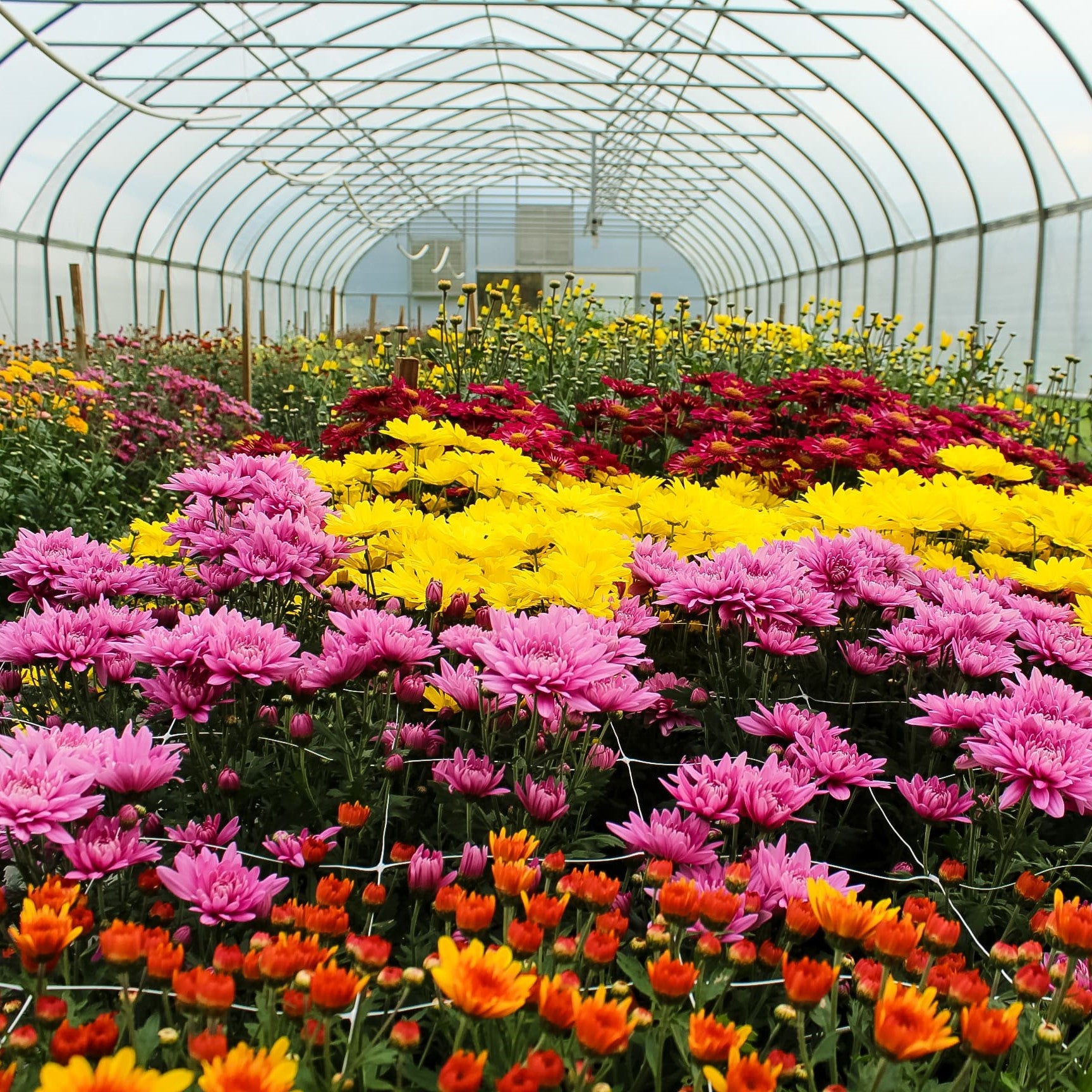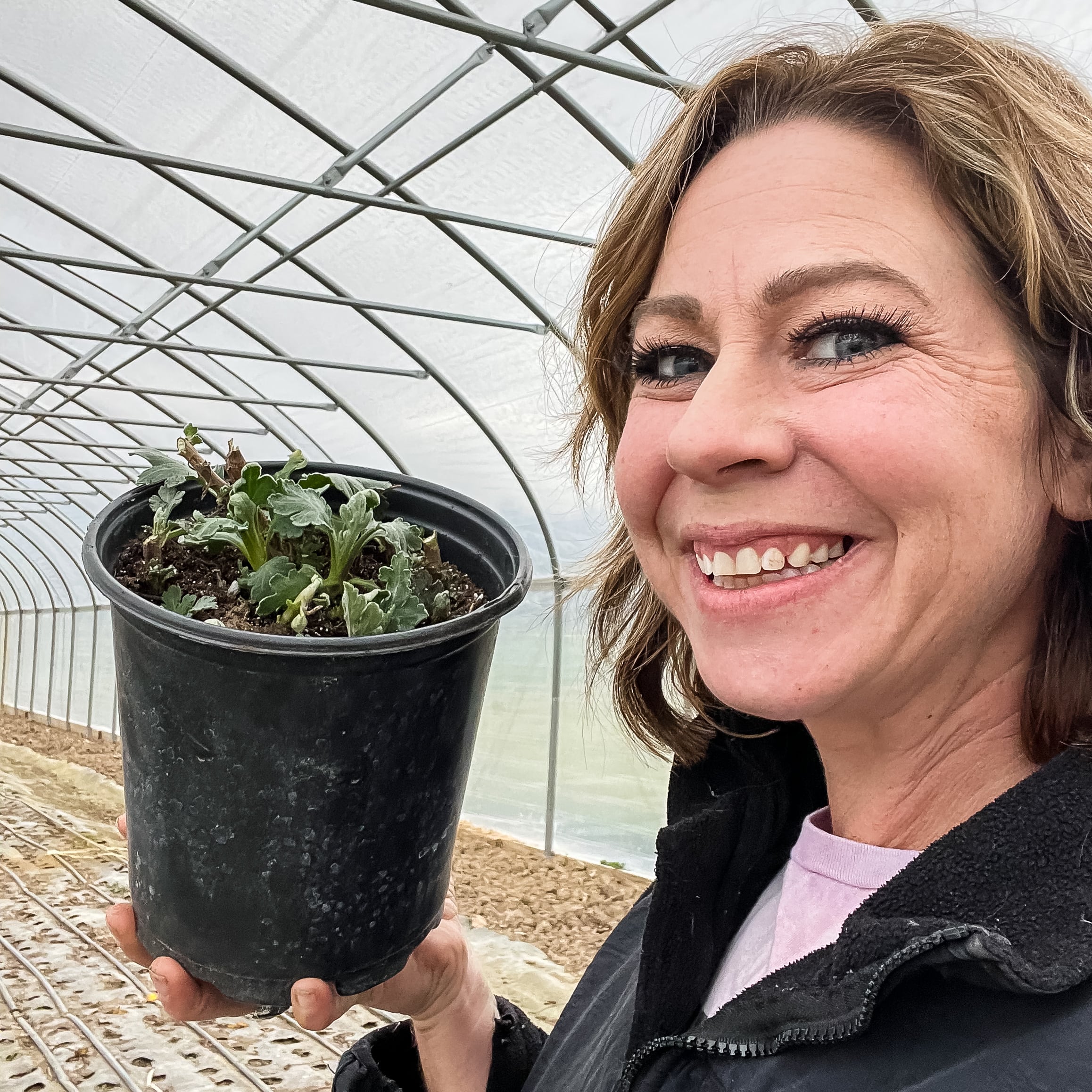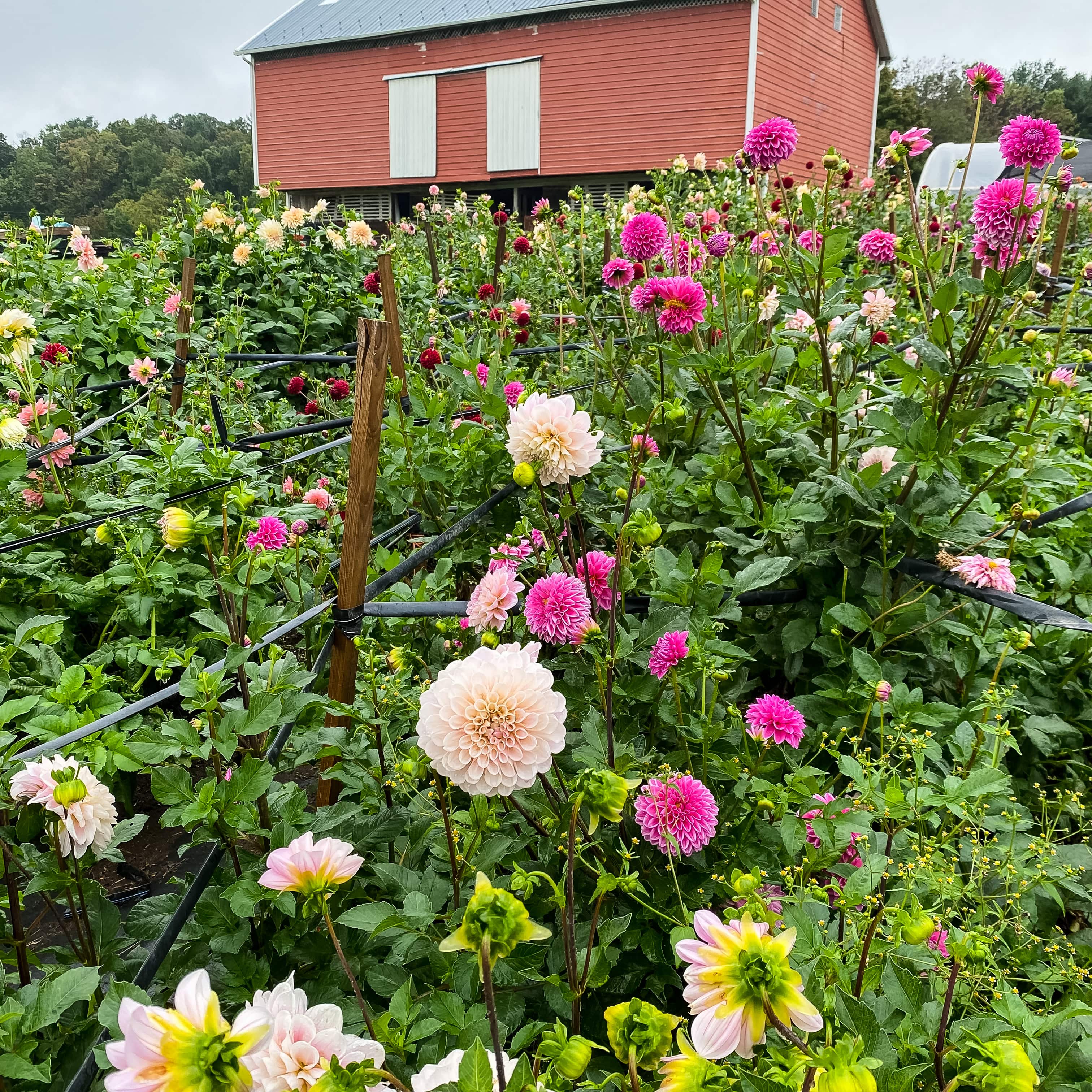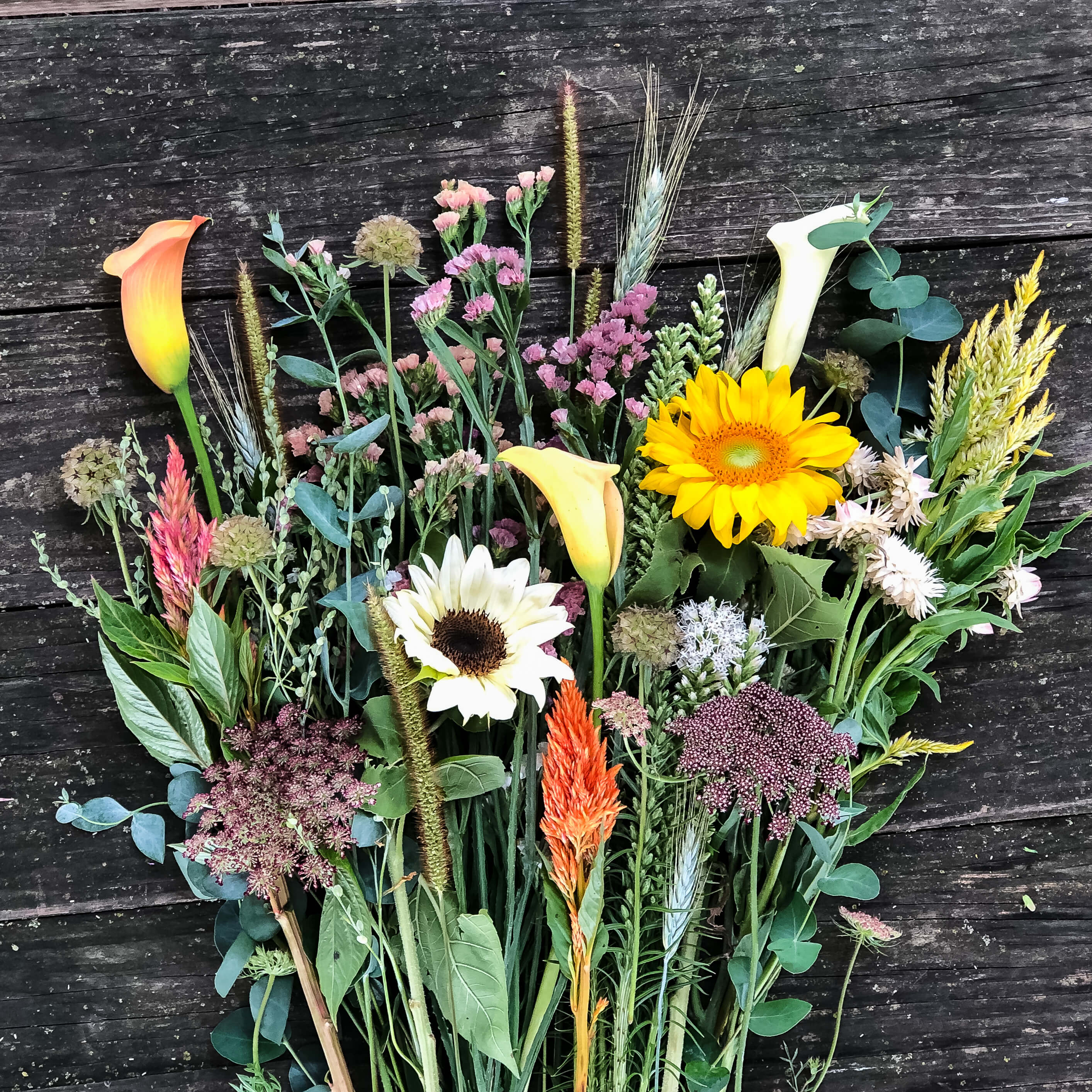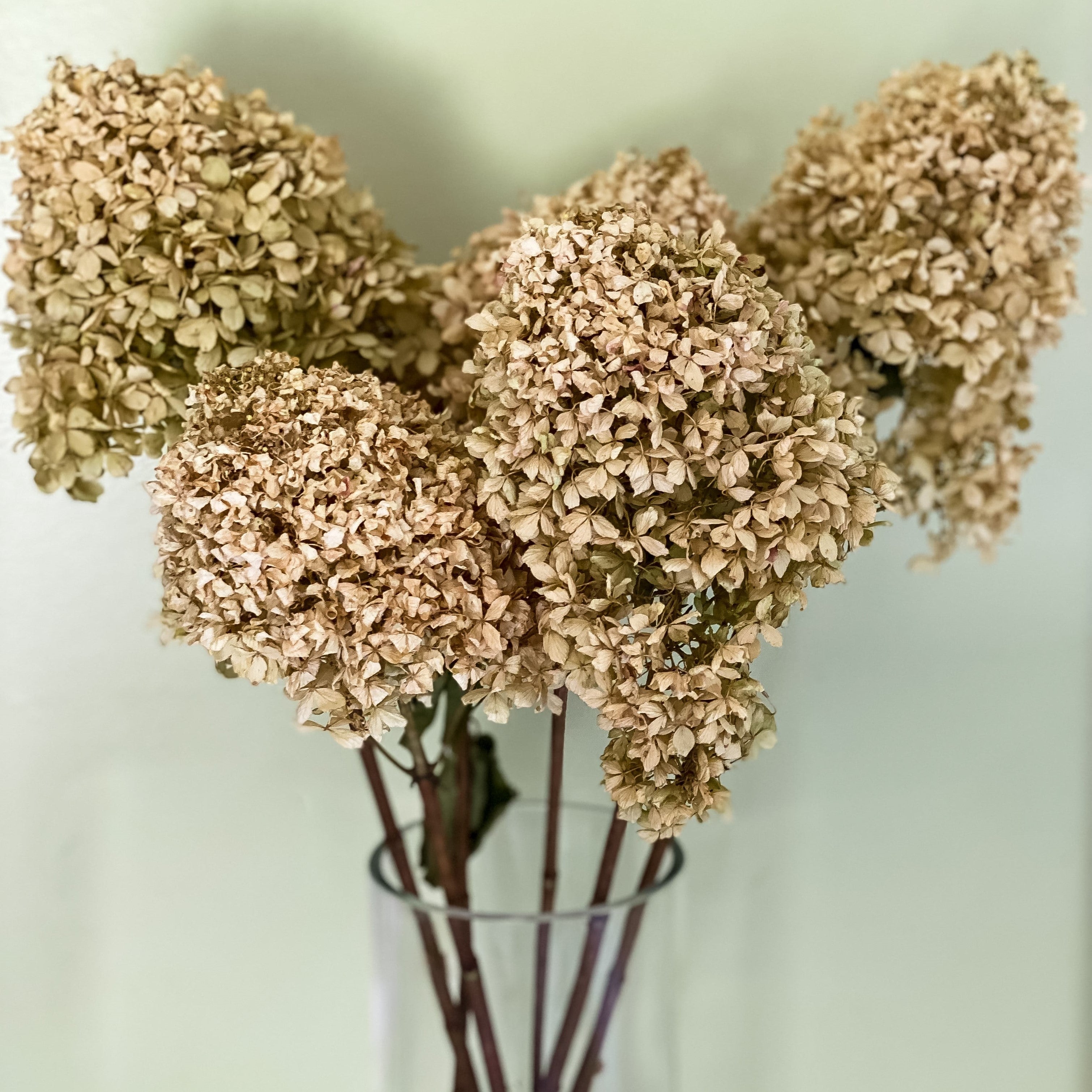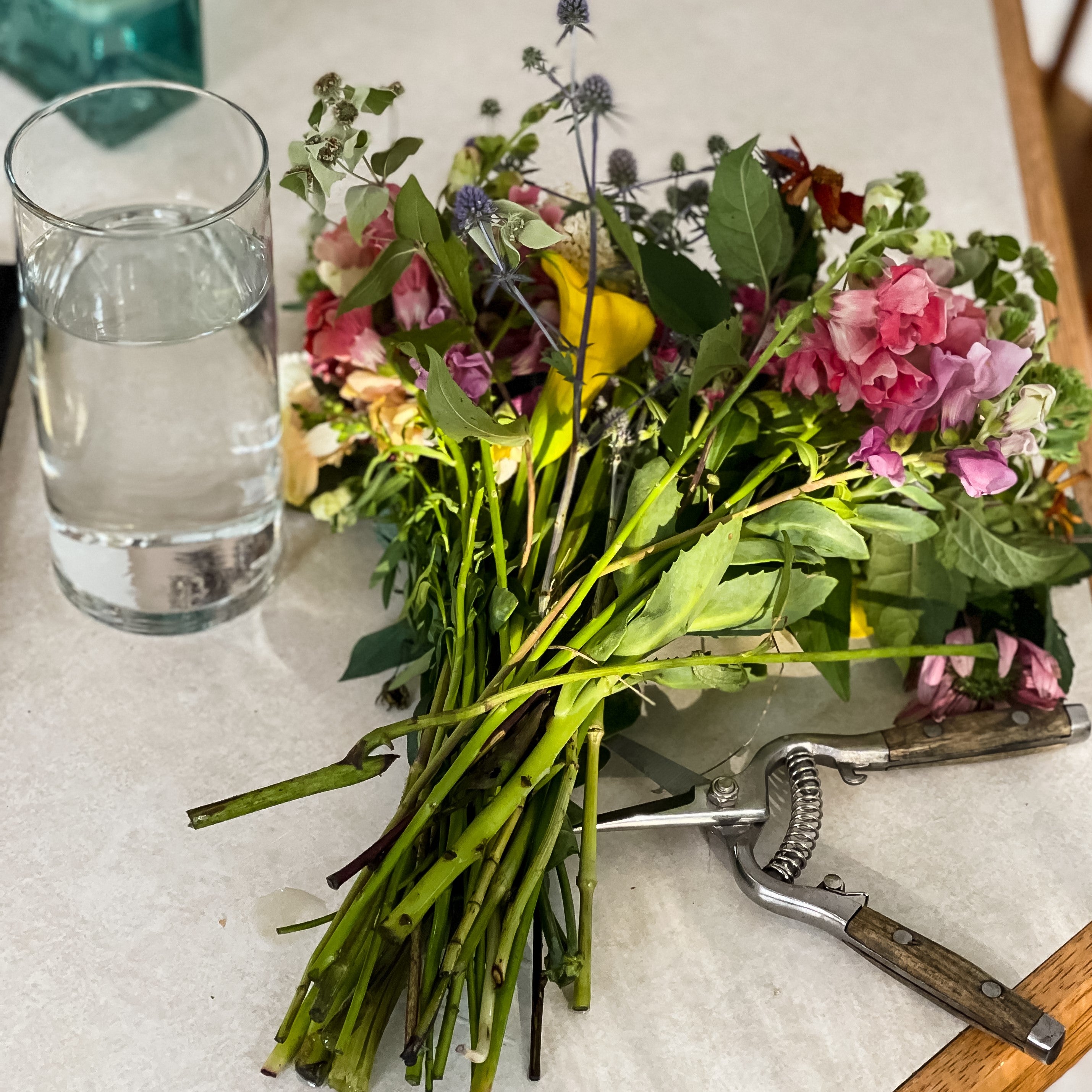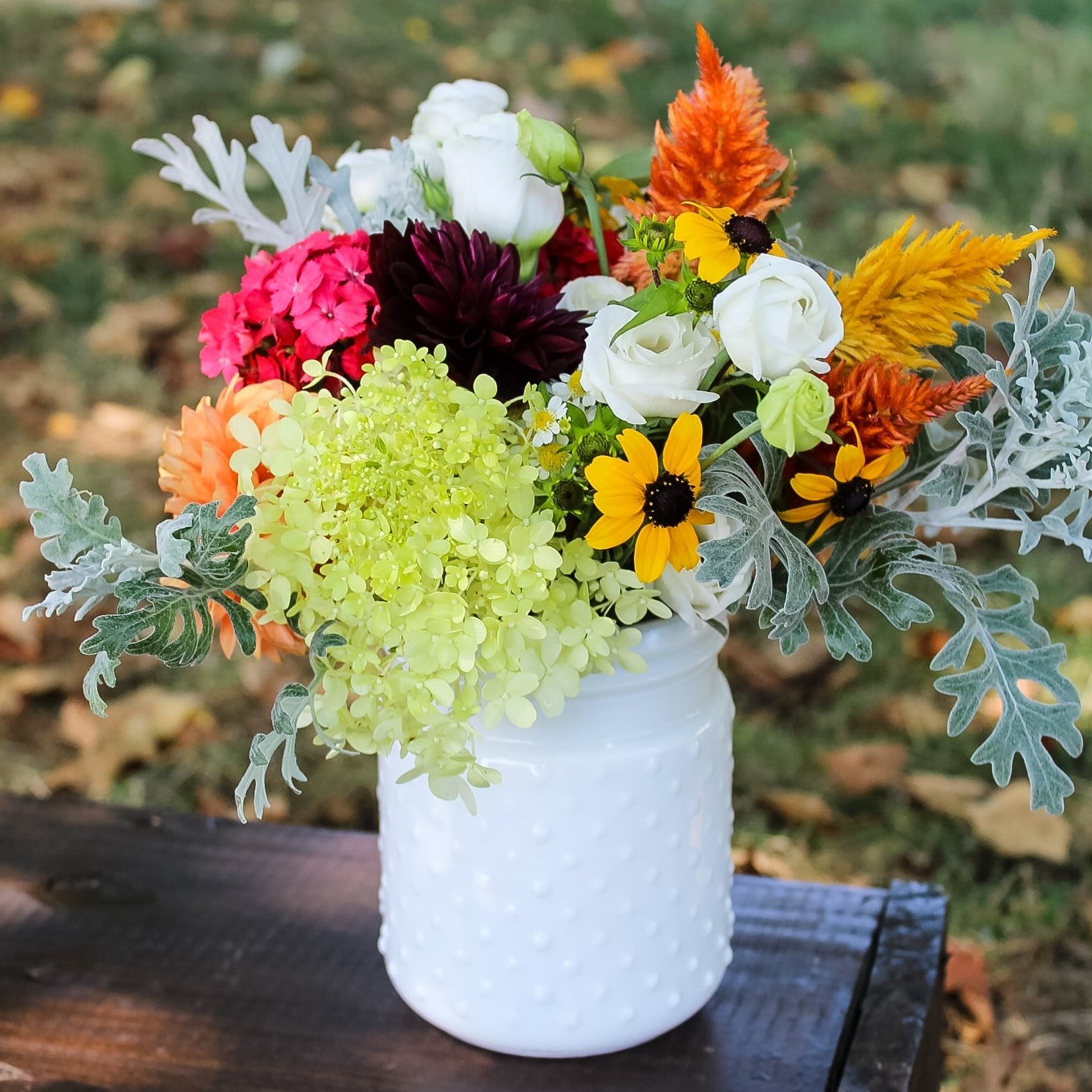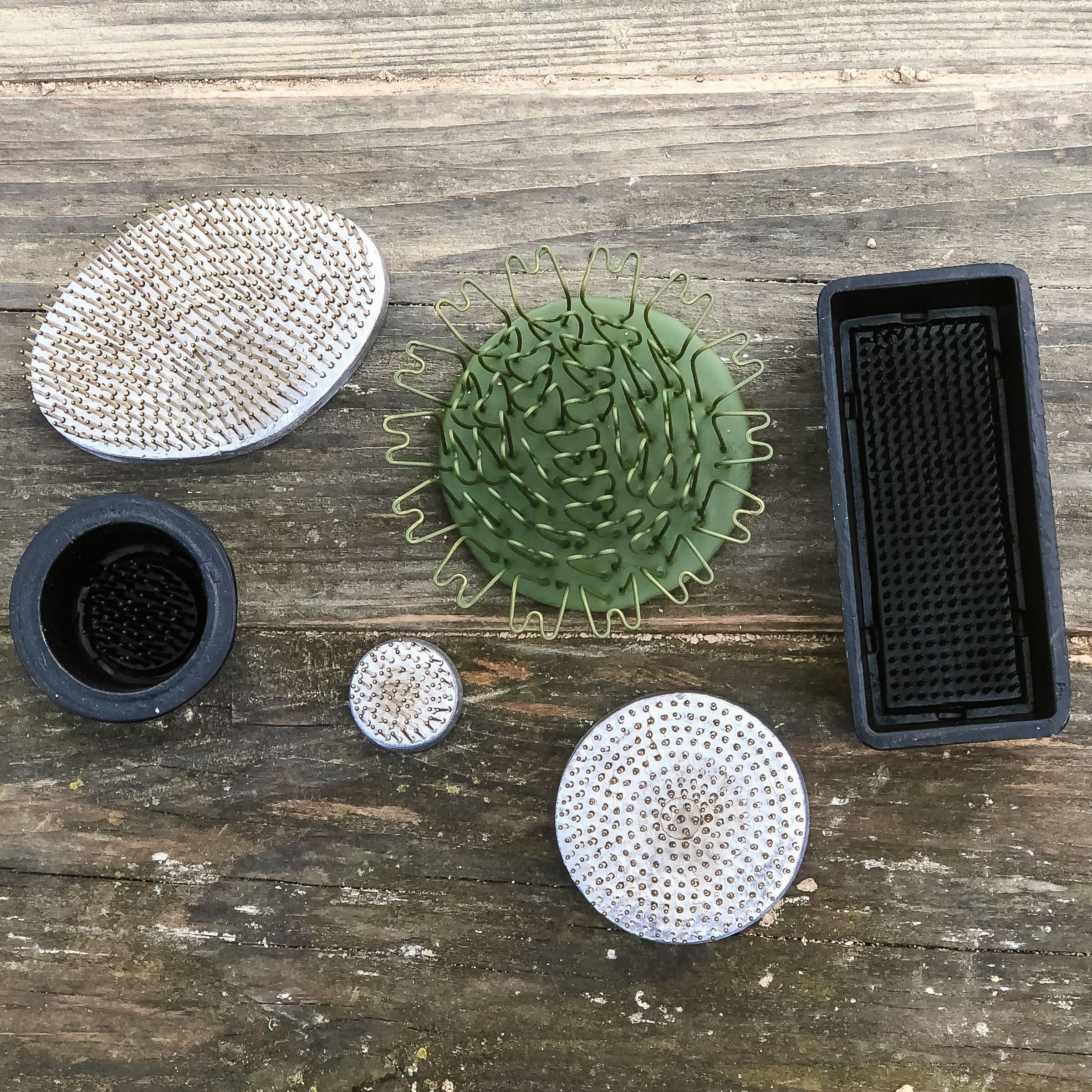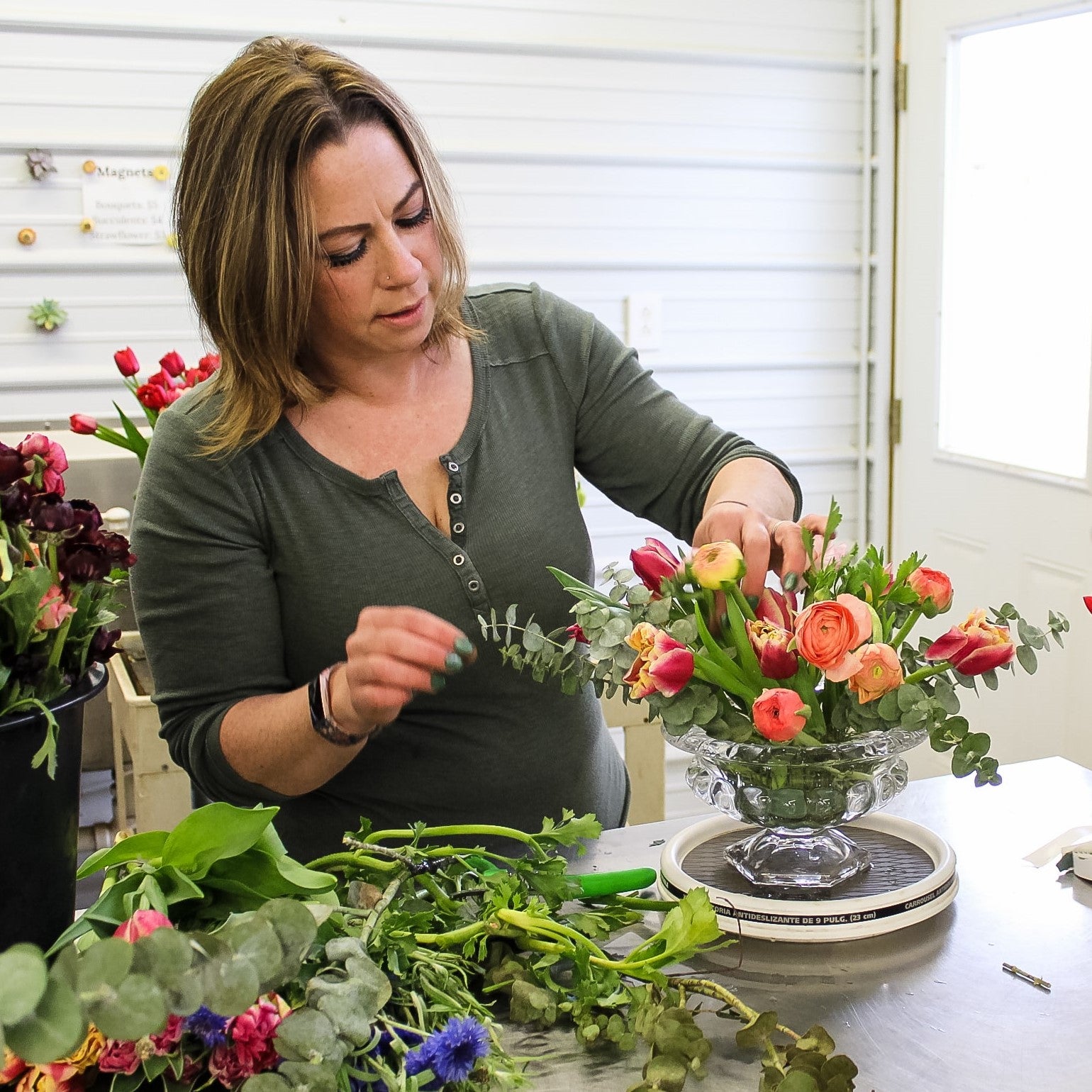Jess here, and I have to be really honest. I haven’t always been a foam-free floral designer. That’s right, even though I’m the co-owner of Floral Genius (the only US makers of flower frogs), I too started my floral design journey with the big green monster, floral foam.
Floral foam was originally invented by V.L. Smithers in the 1950s, and by the mid-1960s, this disposable mechanic became a staple in the US floral industry.
The benefits of foam are pretty straightforward; you design flowers in a vase or for an installation while keeping them hydrated. There’s also the fact that it’s cheap to get and always in supply. It has it all, right?
Not quite. As amazing as floral foam might seem, there’s actually a lot of reasons why many floral designers and garden clubs are ditching the chalky mechanic. Here are some of the reasons why I decided to go foam-free, and save the domestic production of metal flower frogs.
The environment. Unfortunately, floral foam doesn’t break down in the landfill, and with thousands of floral arrangements and event installations happening every day, that’s a lot of foam headed to the dump. What a lot of people don’t know is that floral foam plastic which is why it sticks around forever, and while it’s cooking at the landfill, it’s actually leaching toxins into the ground. Yikes.
And it’s not just the ground that’s suffering from the impacts of discarded foam. In a survey conducted by the Sustainable Floristry Network, it was reported that 72% of florists poured floral foam water waste down the drain. This releases toxic microplastics into the water systems which an RMIT study showed had a worse impact on aquatic life and invertebrates than any other plastic waste. Oui.
Yes, there are “biodegradable” versions of foam, but the truth is, they take *forever* to break down and only under perfect conditions. So, does that even really count?
Flower frogs, on the other hand, are meant to be used over and over again. When taken care of well, they can last for decades! I recommend cleaning them with mild soap after every use and using a pin straightener to keep them in good working condition.
Your health. The amount of times I’ve created floral foam dust while cutting down dry blocks while hovering, mouth open, over my mess makes me nauseous. Even though the final product has less than 0.1% toxicity, it felt a little backwards breathing toxic dust particles just to make something that was natural and organic.
Yes, most flower frogs (well, the good ones anyway) are made from lead, and you have to be careful when using them. If you’re worried about lead toxicity, I recommend getting flower frogs that have been painted so you’re not handling the raw metal. You should always wash your hands after using flower frogs, and try to avoid contact with your mouth while designing (pro tip: you should do this anyway.)
The reason that most flower frogs are made from lead is because it’s very heavy and can support large designs, and it will never rust. Another benefit of lead is that it’s actually a pretty sustainable metal. There’s only a certain amount of lead in the world so it’s *constantly* being recycled. The world uses the same amount of lead over and over and over again.
Designability. I never realized how much foam limited my design. As I spent more of my time training under highly talented designers like Gregor Lersh, Holly Chapple, and Ariela Chezar, I began to realize that there was something missing from most of their demonstrations - floral foam. I spent hours in the studio practicing what I’d learned with tape grids and chicken wire and was loving the style I started to develop for myself. Then, I’d have a wedding, and all of the sudden I’d grab the foam bricks for my arbor designs and barrel arrangements only to find myself pulling my hair out trying to find my style. Nothing moved the way I wanted it to. Nothing looked the way I wanted it to. Nothing felt like “my style”.
One of the things I like the most about designing in flower frogs instead of foam is that I can move things without compromising the stability of my arrangement. When you insert a flower stem into foam, that hole is there for good. For me, there are times where I want to change the placement of a stem as my design evolves, and this is so much easier to do with flower frogs. Move your stems one too many times with floral foam, and the green blob is going to crumble under the pressure.
Flower health. As a flower farmer, I can guarantee you that flowers do NOT like green water. Flowers like clean, fresh water, something almost impossible to provide them with when they’ve been stuck into a block of floral foam. And, let’s not forget about how flowers drink. Their stems act as straws, which are immediately clogged when the stems are inserted into floral foam. Imagine trying to drink through a straw that was filled with paper towels.
Flowers that stay hydrated with fresh water last longer. With flower frogs, the flowers are inserted onto pins that still allow water to flow up the stem. Sure, lead can leach into the water but its natural properties don’t affect the health of the flower. And as far as human health goes, I hope no one is out there drinking old vase water.
The more I learn about foam-free floral design, the more I wish I would have ditched the foam sooner. As a farmer, I want to leave this earth better than I found it. As a designer, I want my flowers and designs to be full of life. And as a mom, I want to be healthy. Whenever I talk to other foam-free designers, I find they're all motivated to practice sustainable floristry for different reasons. Have you made the move towards foam-free flowers? What was your reason?
